Biology Unit on the Biosphere: biomes, ecosystems, habitats, feeding relationships, biological interactions
What is the difference between a biome, ecosystem, and habitat? What is the difference between a food chain and a food web? What are trophic levels? What is the energy pyramid? What is symbiosis? How do different species interact? What in the world is amensalism or antiobiosis?! These are some of the things we covered in our latest biology unit!
How We Started Our unit on Biomes: This semester we started with an overview of the main biomes. The kids could come up with the names for all of them, though not the more specialized words (like taiga or chaparral.) In our biology packet, we have several different notebook pages on the main biomes. The kids did the “fill in the blank” version as we highlighted some of the main features of each biome (there’s also one that is completely filled in, one that just has the biome name and students can write in their own information, and a matching page (which my kids did a couple of weeks later):
In the packet, there are full-sized (8 1/2 by 11) photos of each biome. I chose to print 4 per page which worked well for our needs. I laminated them and cut them apart.
What are the major biomes?
- Arctic
- Alpine Tundra
- Boreal Forest or Taiga
- Deciduous Forests
- Deserts
- Grasslands
- Tropical Savannas
- Chaparral
- Tropical Rain Forest
As we kicked off our unit, I had the kids choose a biome and they each did research and give a 3 to 5 minute speech on what they learned. They actually loved that! LD did deserts; DD did hers on the savanna; and ED did rain forests.
We then did an activity on rain forest plants, which I talked about in this post (and which I also explained in the packet).
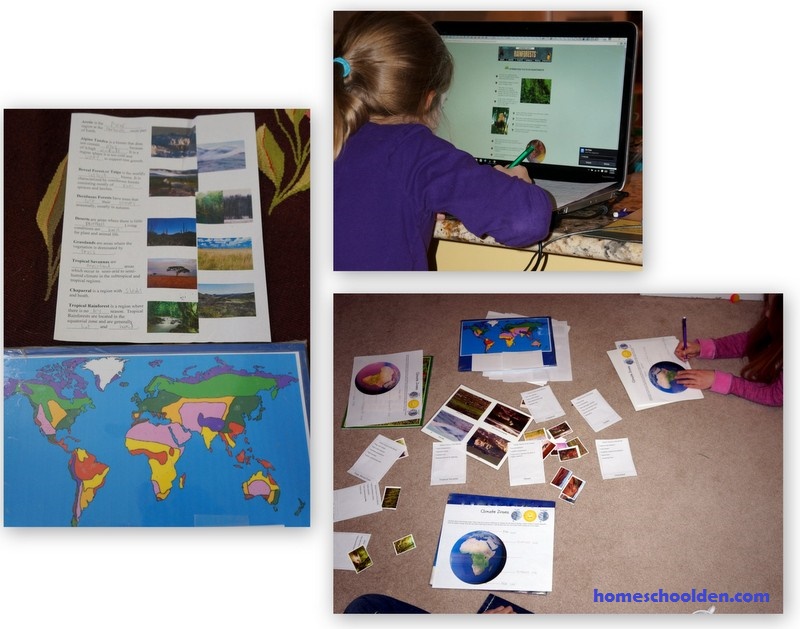
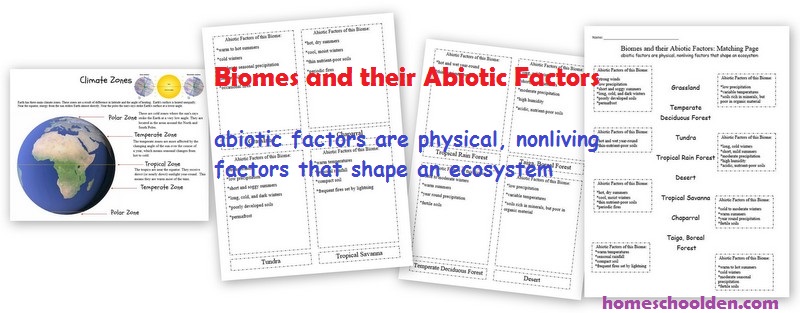
We learned the difference between food chains and food webs… and talked about the energy pyramid. The packet includes some interactive notebook activities:
Learn about the trophic levels with this interactive notebook/lapbook activity:
The kids spent one day on the anatomy of a cat and dog. You’ll find those sheets in this packet as well:
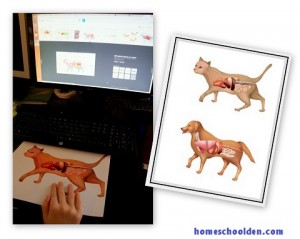
There are some self-correcting review cards for these terms as well:
Our unit would definitely not have been as amazing without the breathtaking footage and fascinating stories about the animals of our planet!! We watched the BBC documentary Life (affiliate link) also narrated by David Attenborough as we studied the different biomes, feeding relationships and biological relationships. This series was the perfect complement to our studies because it really looked in depth at “some of the more colorful strategies the world’s creatures employ to procreate, evade predators, and obtain nourishment. This enthralling BBC series examines “the lengths living beings go to to stay alive.” We highly, highly recommend this documentary:
We spent time talking about food chains, food webs, and the energy pyramid.
In the last part of this unit, we spent quite a bit of time learning about biological interactions:
- Amensalism
- Predation
- Competition
- Antibiosis
- Mutualism
- Commensalism
- Parasitism
We start with a general discussion of symbiosis and I also introduced the animal defense – mimicry. Then we go into more detail about the different biological relationships: This relationship can be helpful to both symbionts, helpful to one but neutral to the other, or helpful to one but harmful to the other. One or both of the symbionts might entirely depend on each other for survival or they might generally live independently.
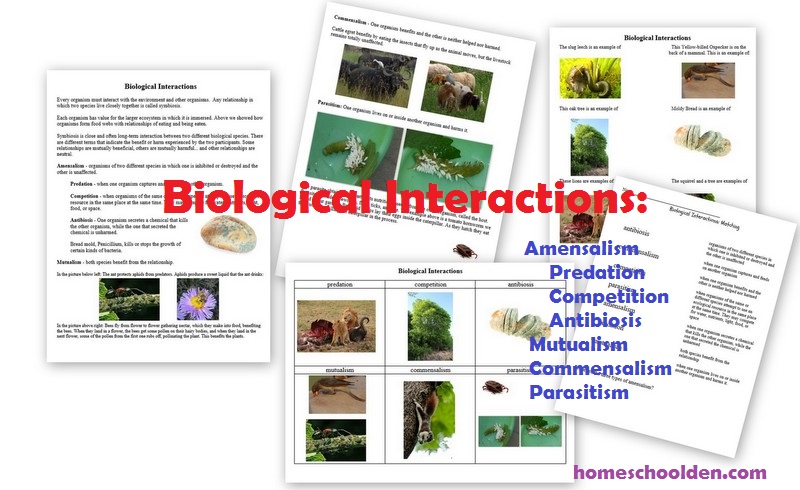
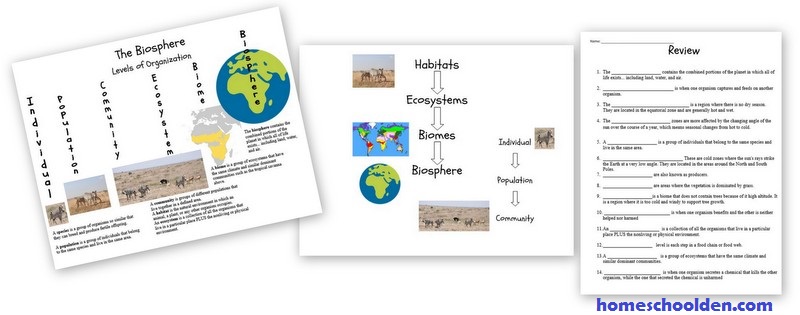
Our units are PDF digital downloads. Be sure to check your PayPal email address for the download link. If you have any questions or problems feel free to email me! You should get your automatic download link from SendOwl within a few minutes. If you don’t, be sure to email me if you need me to send the link to you again! Here are some answers to some Frequently Asked Questions. ~Liesl
Biology Packet on the Biosphere: Biomes, Ecosystems, Habitats, Feeding Relationships, Biological Interactions and More!
Biology Packet: $8.99

Click here to save this on Pinterest
Biology BUNDLE OPTIONS:
Our units are PDF digital downloads.
Visit this Biology Bundle Page for more details (and lots more pictures!)
$44.99 Biology BUNDLE of 7: 1) Biology Unit (Biomes, habitats, food chains/webs, feeding relationships) 2) Scientific Classification & Taxonomy Packet 3) Ocean Unit & Layers of the Ocean/Ocean Zone Activities 4) Cells Unit 5) Botany Unit 6) Pathogens Unit – Bacteria, Protozoa, Fungi, Parasites/worms; Viruses and Prions 7) New! The Cell Cycle and Mitosis
Again, you can see the Biology BUNDLE Page for lots more pictures!
Don’t forget to check your PayPal email address for the download link from SendOwl (the delivery service I use)!
$8.99 Biology Unit: Biomes, habitats, ecosystem, biological interactions, feeding relationships (170 pages)
$8.99 Cells Unit (150+ pages) – cell theory, prokaryotic vs. eukaryotic cells, animal vs. plant cells, organelles of the cell, chloroplast anatomy, the layers of a leaf, photosynthesis and more.
$7.99 Botany Packet — (80 pages) Plant Classification, Life Cycle of the Moss, Fern, Conifer, Angiosperms, Parts of a Flower, Parts of a Seed, Seed & Fruit Development, Monocots vs Dicots – plus Carnivorous Plants Mini-Unit
$8.99 Ocean Unit – Layers of the Ocean/Ocean Zone: (100+ pages) Marine Habitats, Coral Reefs, Tide Pools, Water Form Words, Ocean navigation, Features of the ocean floor, salinity, ocean tides & currents, ocean life, bioluminescence & more!
$7.99 Scientific Classification and Taxonomy Packet (100 pages) dichotomous key activity, Linnaeus & the history of classification, learn the Animalia phyla (Annelids, Platyhelminthes, Nematodes, Cnidaria, Animalia, etc.)
$8.99 Pathogens Packet (100 pages) – This unit covers the six major living and nonliving pathogens: bacteria, protozoa, fungi and parasites/worms as well as viruses and prions. The large majority of this packet goes into detail about bacteria and viruses.
$5.99 The Cell Cycle and Mitosis Packet (50+ pages) – This unit covers topics/terms such as cell division, cell death (apoptosis), nucleosomes, histones, binary fission, chromatin, chromosomes, centromere, sister chromatids, and the lifespan of human cells as well as the stages of the cell cycle including interphase (G1, S, G2) and mitosis (prophase, anaphase, metaphase, telophase, cytokinesis)
Again, you can see the Biology BUNDLE Page for lots more pictures!
Be sure to check your PayPal email address for the download link!
Animal Unit
For younger student, you might want to check out the Animal Unit:
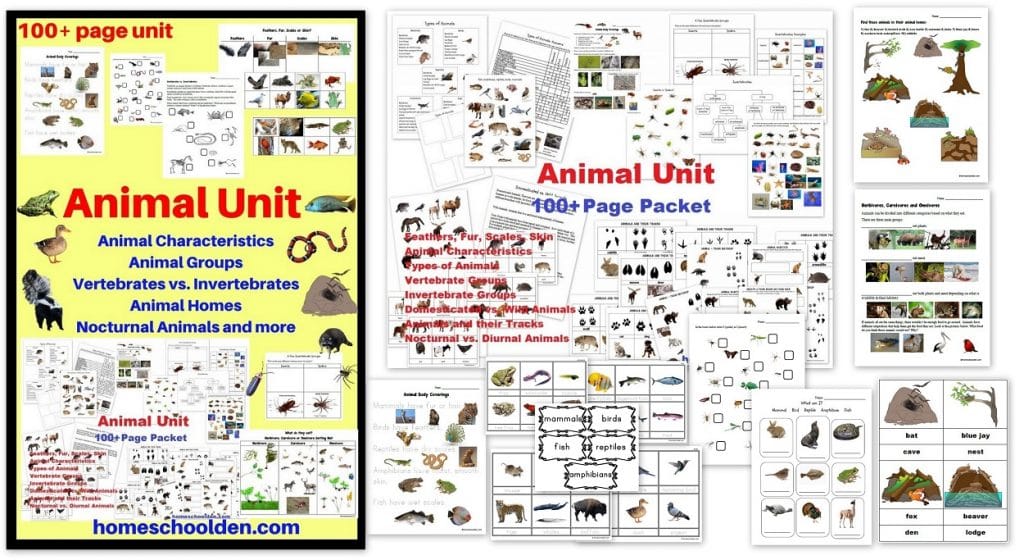
Or you may want check out the Big Animal BUNDLE Options:
The Big Animal BUNDLE includes 8 packets. 1) Animal Unit, 2) World Animals Packet, 3) Rainforest Packet, 4) Life Cycles Packet, 5) Winter Packet – plus several mini units 6) the Cicadas Packet and 7) the Chameleon Packet. 8) the Wolves Mini-Unit.
The other Big Animal BUNDLE Option #2 also includes the Dinosaur Unit and the Australia Unit.
These Animal Units can each be purchased individually as well.
Don’t forget to check your PayPal email address for the download link.
You might also be interested in some of our other packets and printable:
Earth’s 4 Major Systems (FREE!): Atmosphere, Geosphere, Hydrosphere, Biosphere (free printable) – When we started our Biosphere unit, we went over the 4 major Earth systems again using these notebook pages. These pages review the 4 major ecosystems and is a good introduction to any unit on earth science, Earth’s atmosphere, biomes, ecosystems & animal habitats, or an ocean unit.
Earth Science Unit: In this unit we covered the solar system, the layers of the Earth, plate tectonics, the ring of fire, earthquake activity and volcanoes.
Simple Machines Packet – This packet include our hands on activities on levers, wedges and more.
Digestive System Unit – This packet includes hands on activities about digestion, the length of the digestive tract and more
Rock and Minerals Worksheets – Worksheets plus our hands on activities on the three types of rocks
Native American Indians Worksheets
Grammar Worksheets – Its/It’s Their/They’re/There; Comma Rules
See you again soon here or over at our Homeschool Den Facebook Page! Don’t forget to Subscribe to our Homeschool Den Newsletter. You might also want to check out some of our resources pages above (such as our Science, Language Arts, or History Units Resource Pages) which have links to dozens of posts. You might want to join our free Homeschool Den Chat Facebook group. Don’t forget to check out Our Store as well. ~Liesl
P.S. Our store is getting a bit of a make-over. Hooray! I can’t tell you how many people have asked me if there was a way to purchase more than one item at a time. Since I run this blog on my own and always super busy juggling our homeschooling (and homeschool planning), outside activities, and work on the website/business… it has taken a long time to get to this! (Sheepish grin here!)
You can pop over to check out our store here:
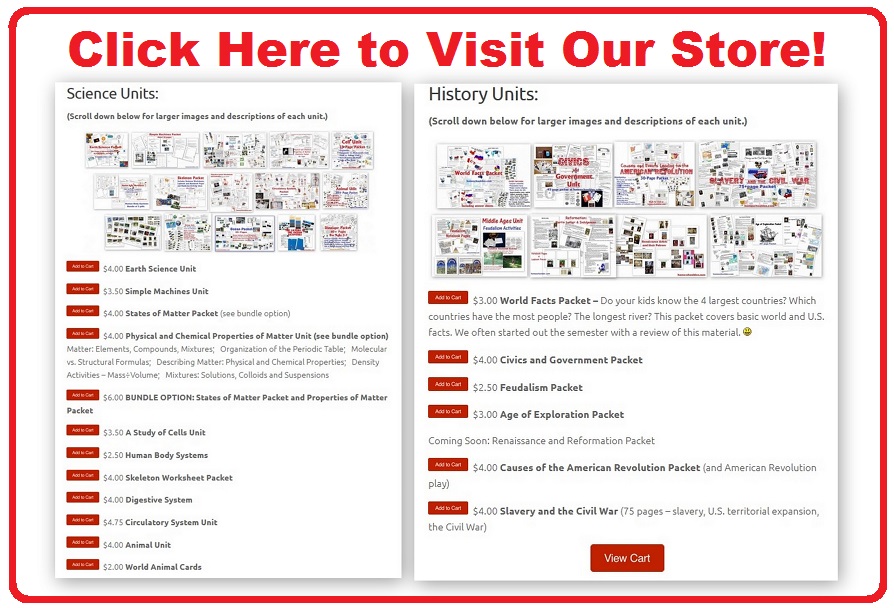
Disclosure: Please note that some of the links in this post are affiliate links, and at no additional cost to you, I will earn a commission if you decide to make a purchase. If you do use our affiliate links, thank you so much for supporting our blog! Warmly, Liesl
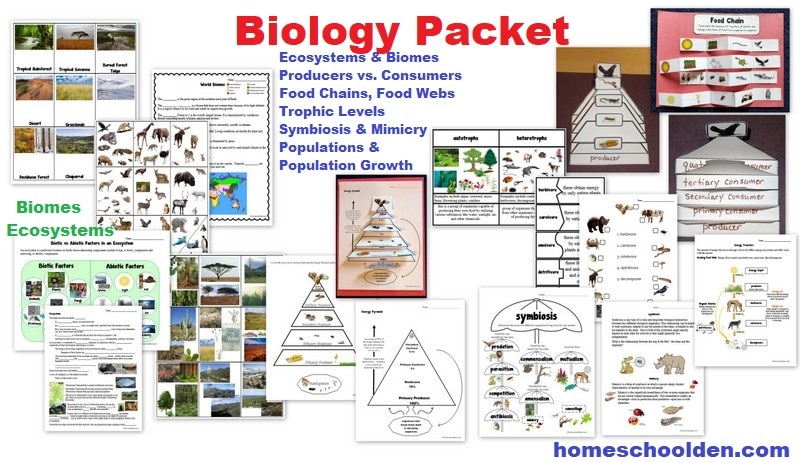
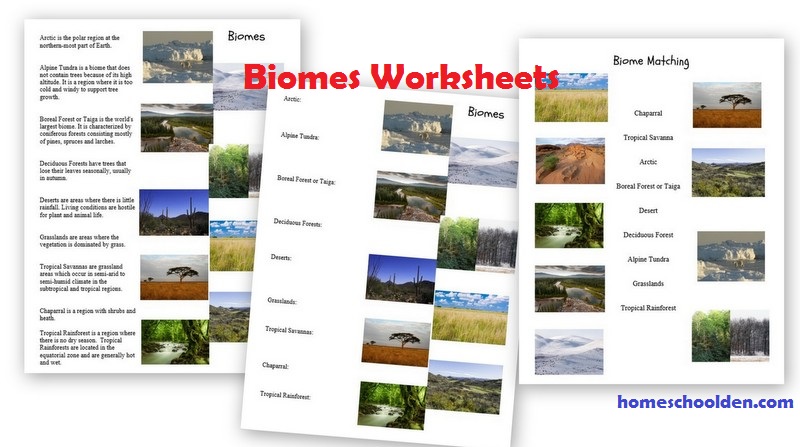
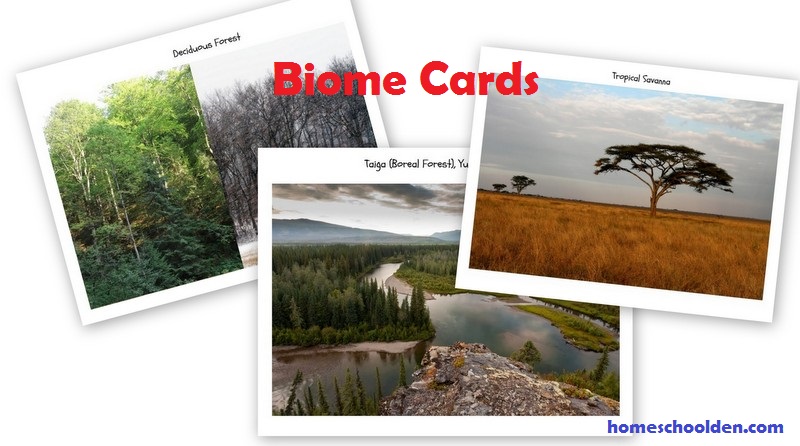
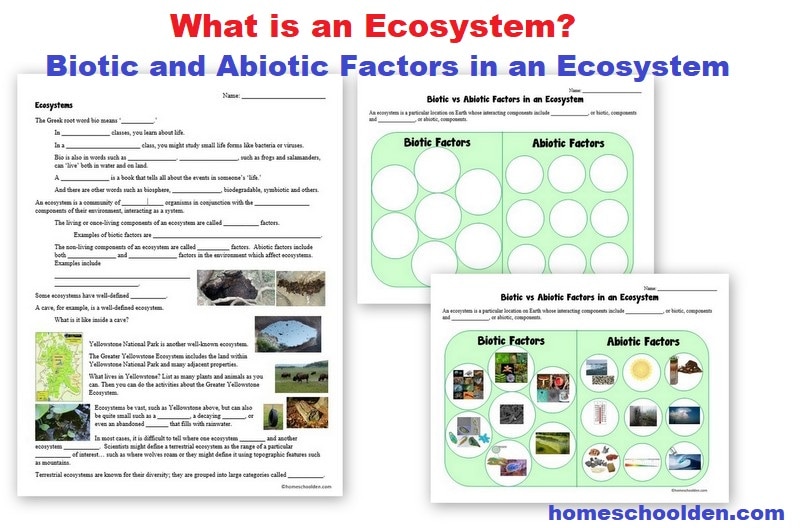
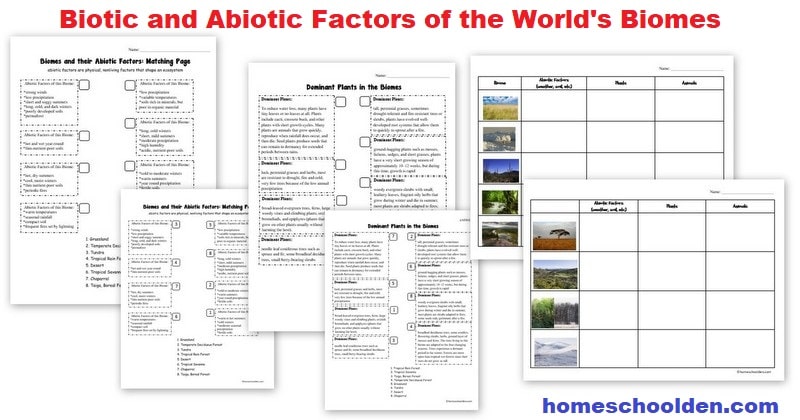
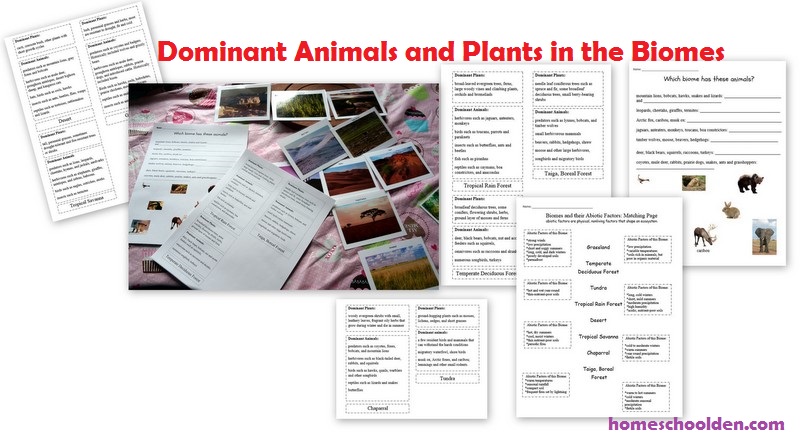

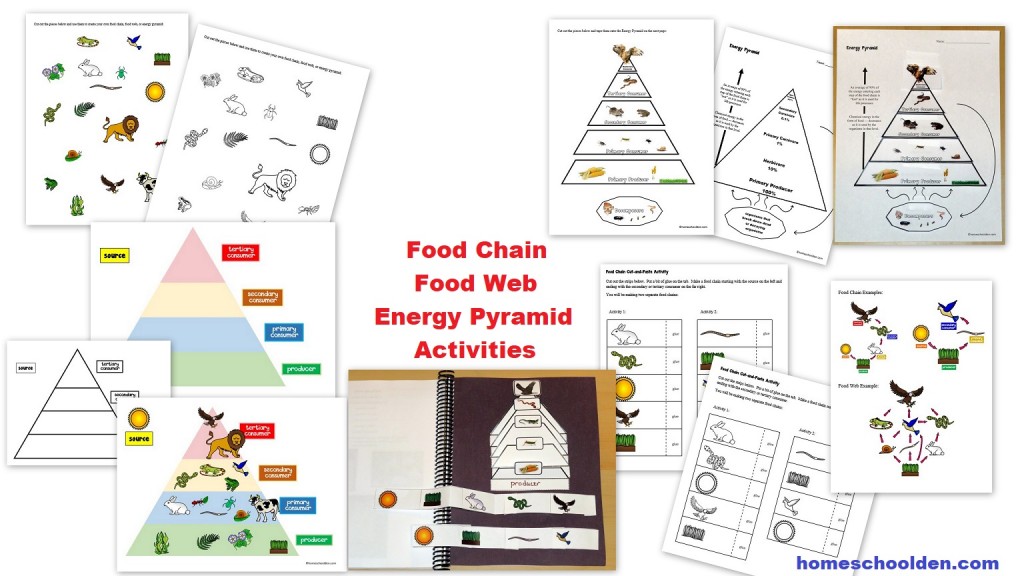
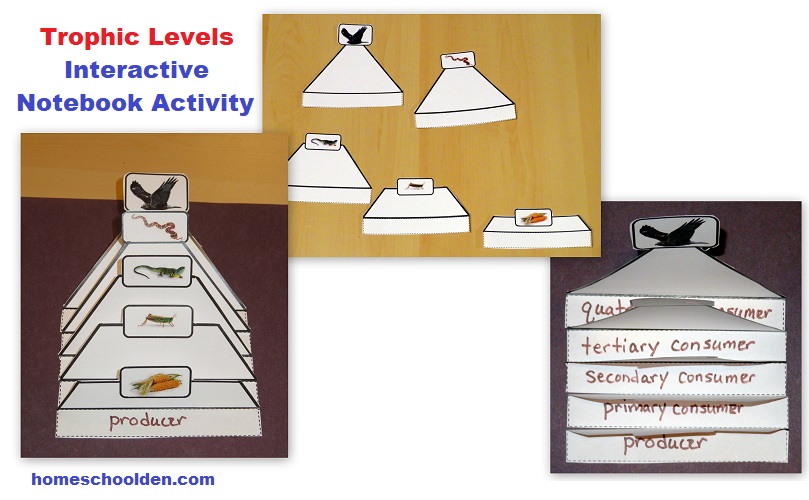
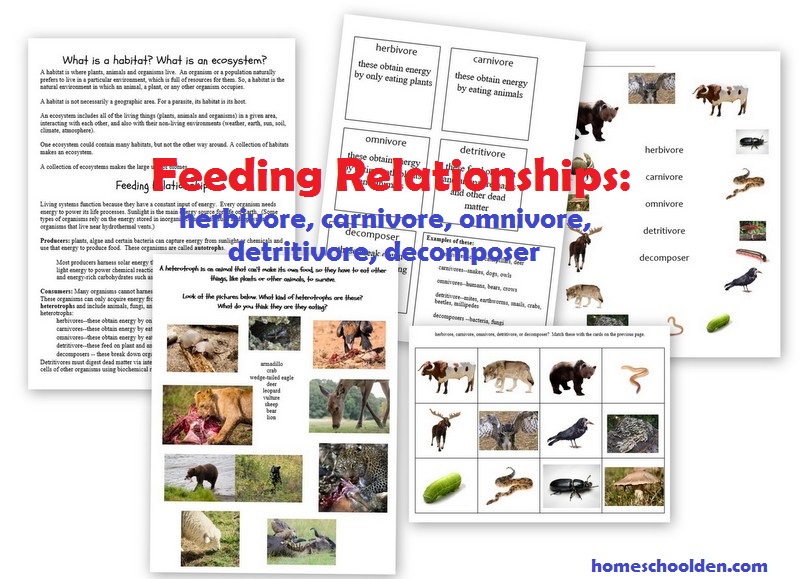
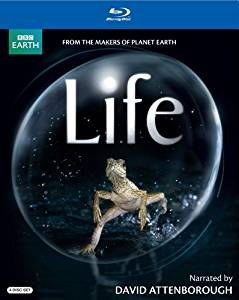
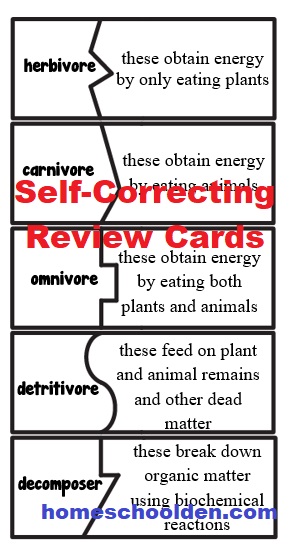
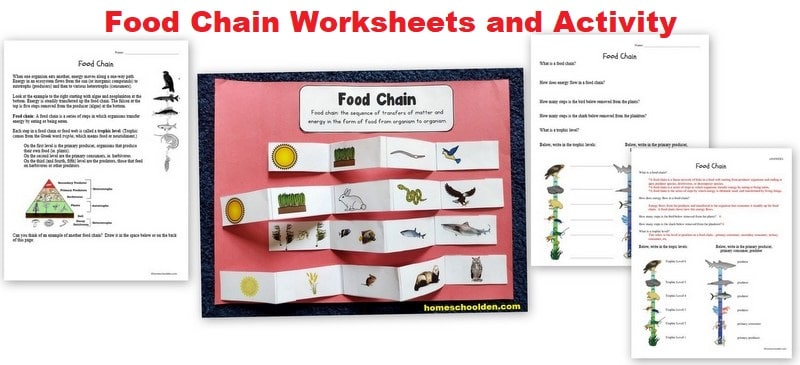
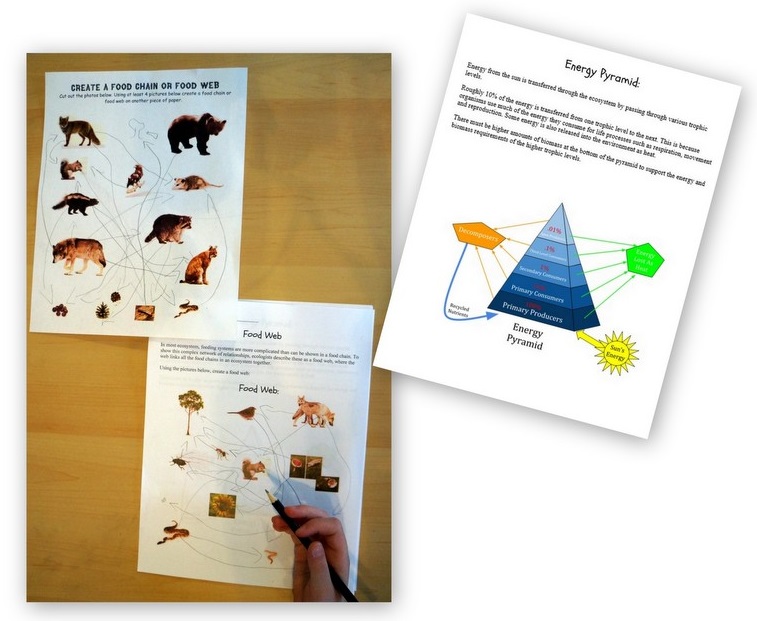
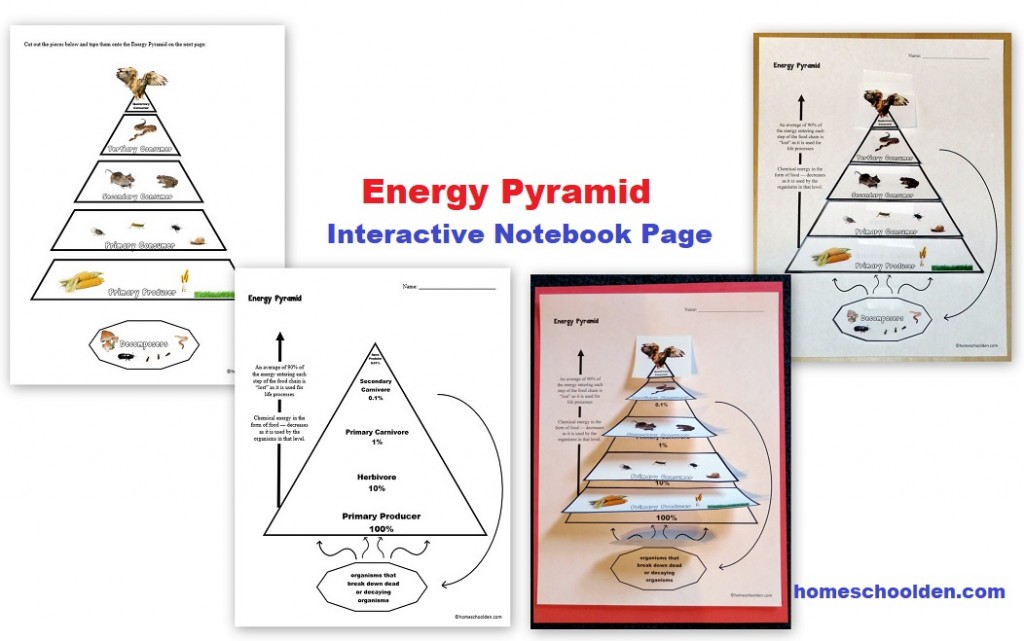

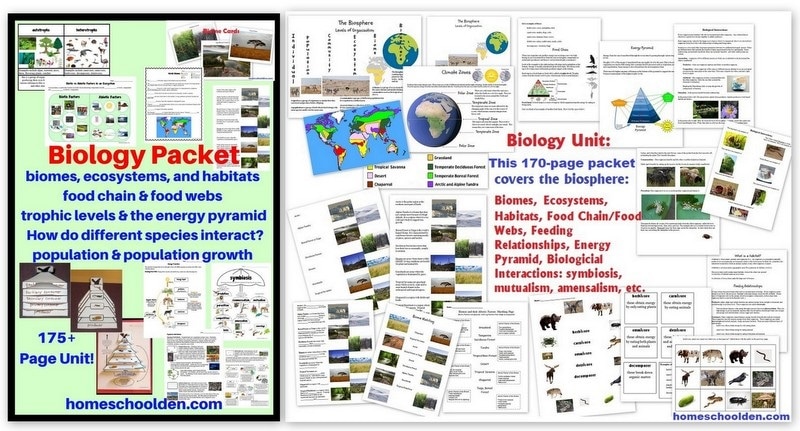
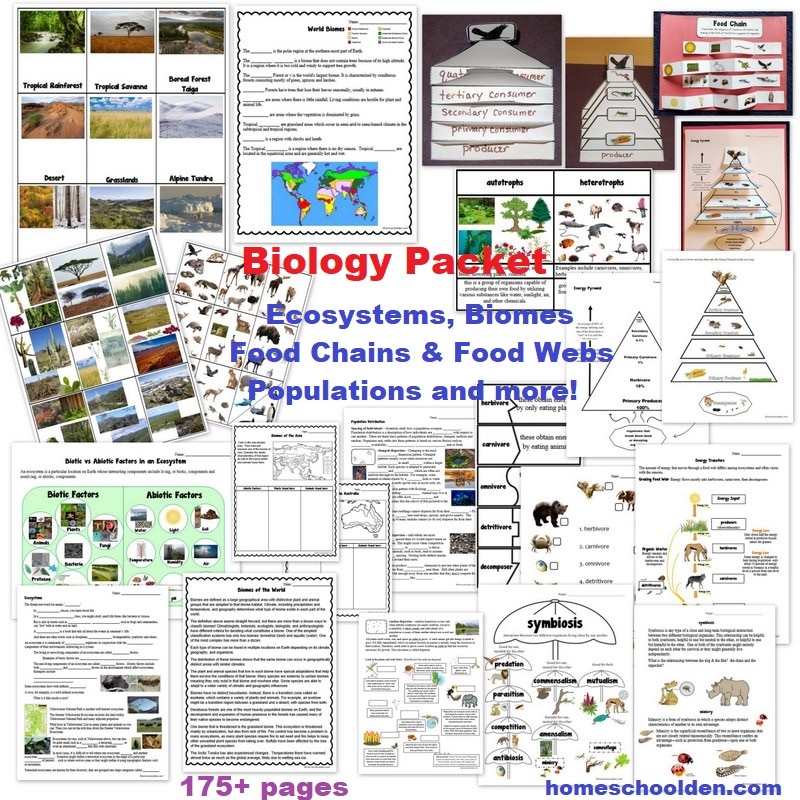
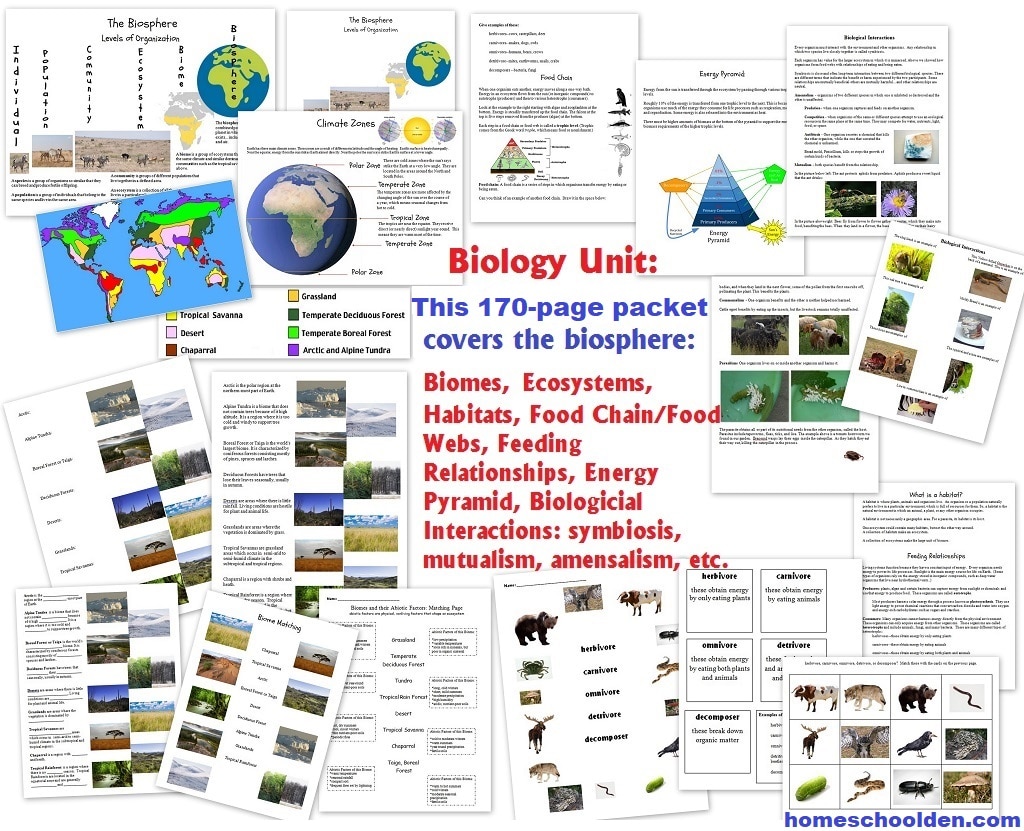
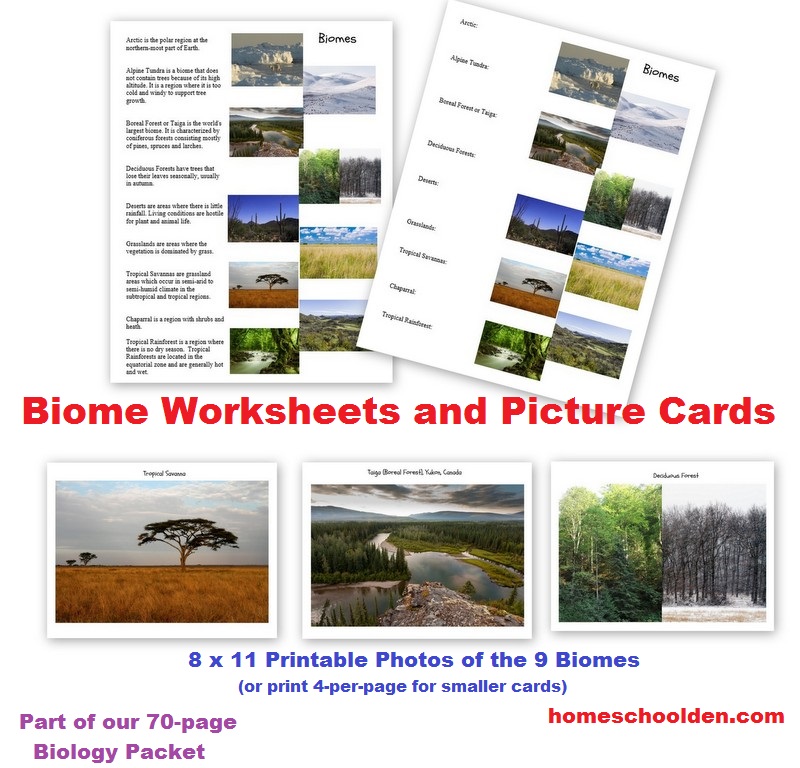
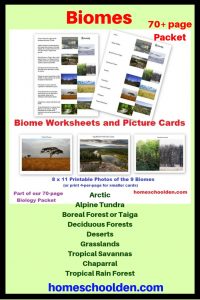
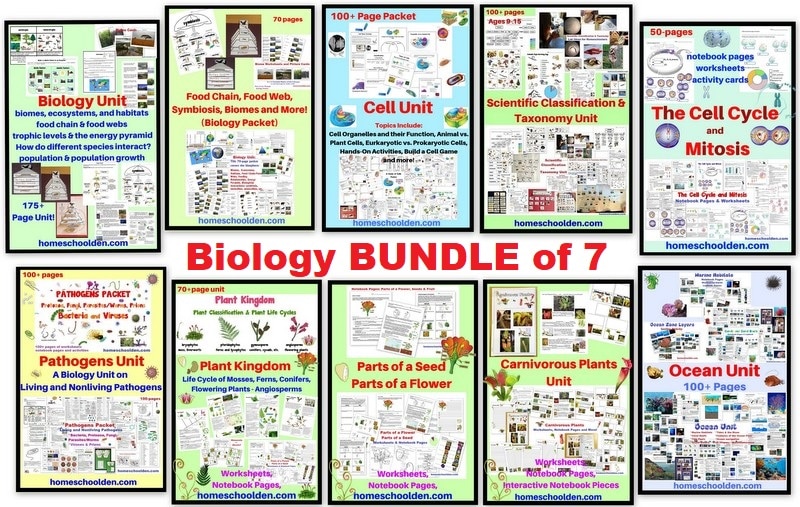
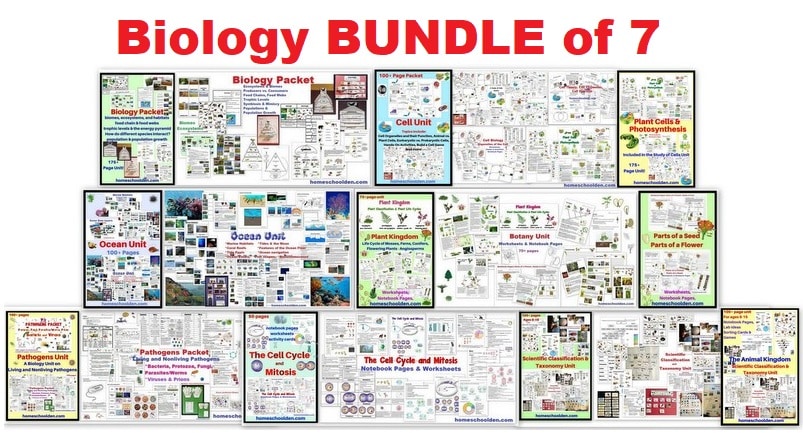
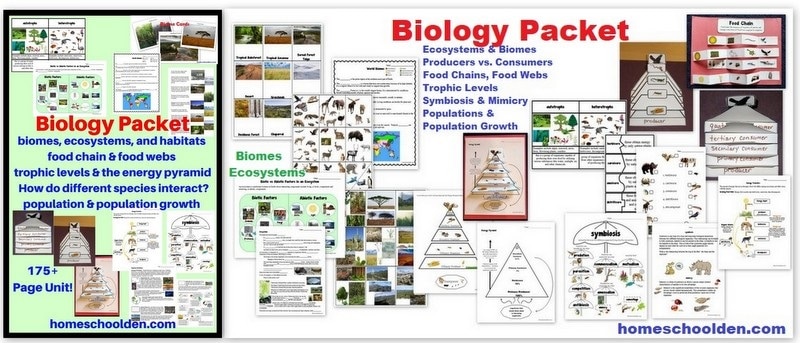
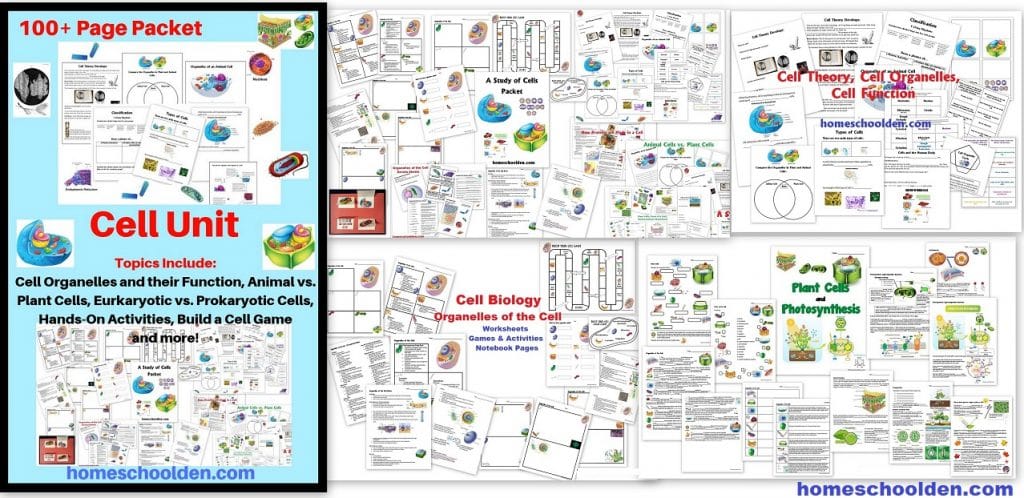
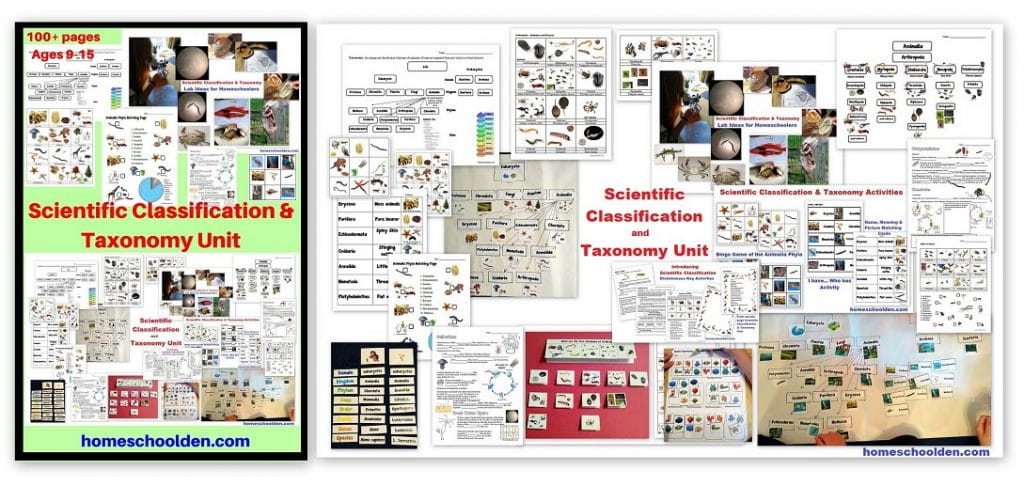

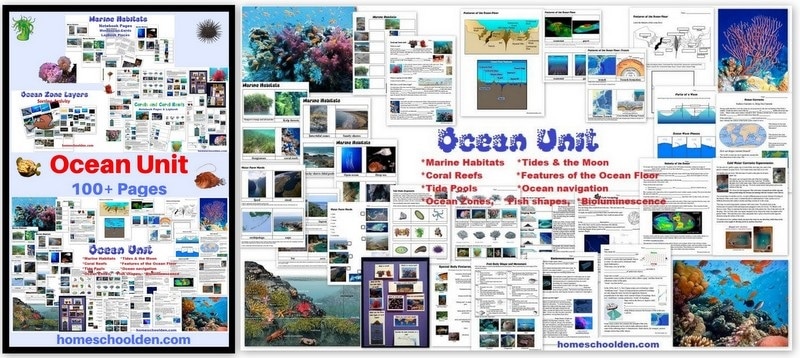
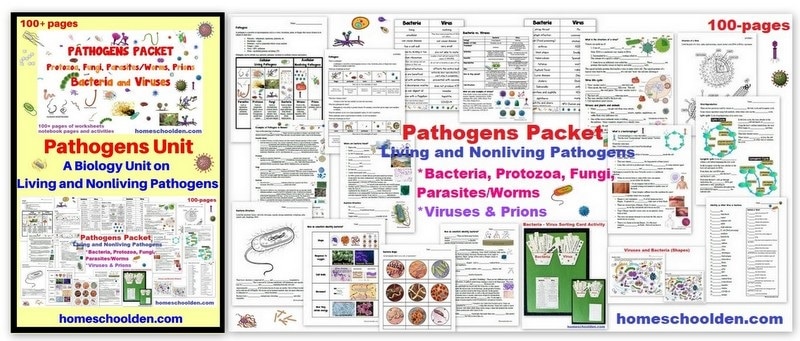

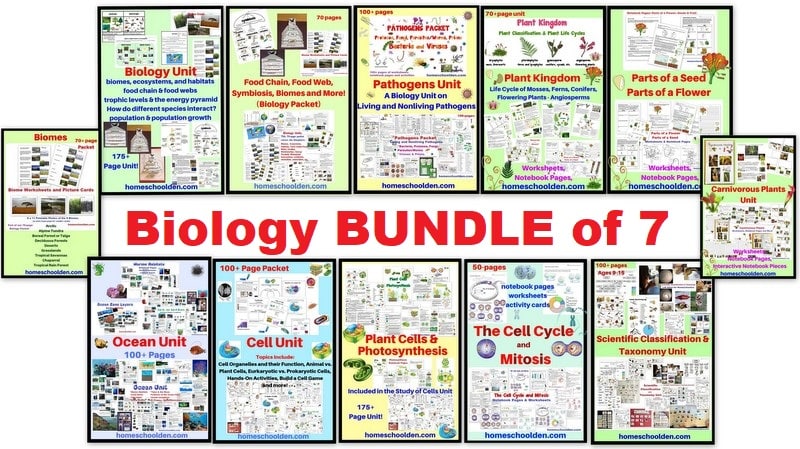

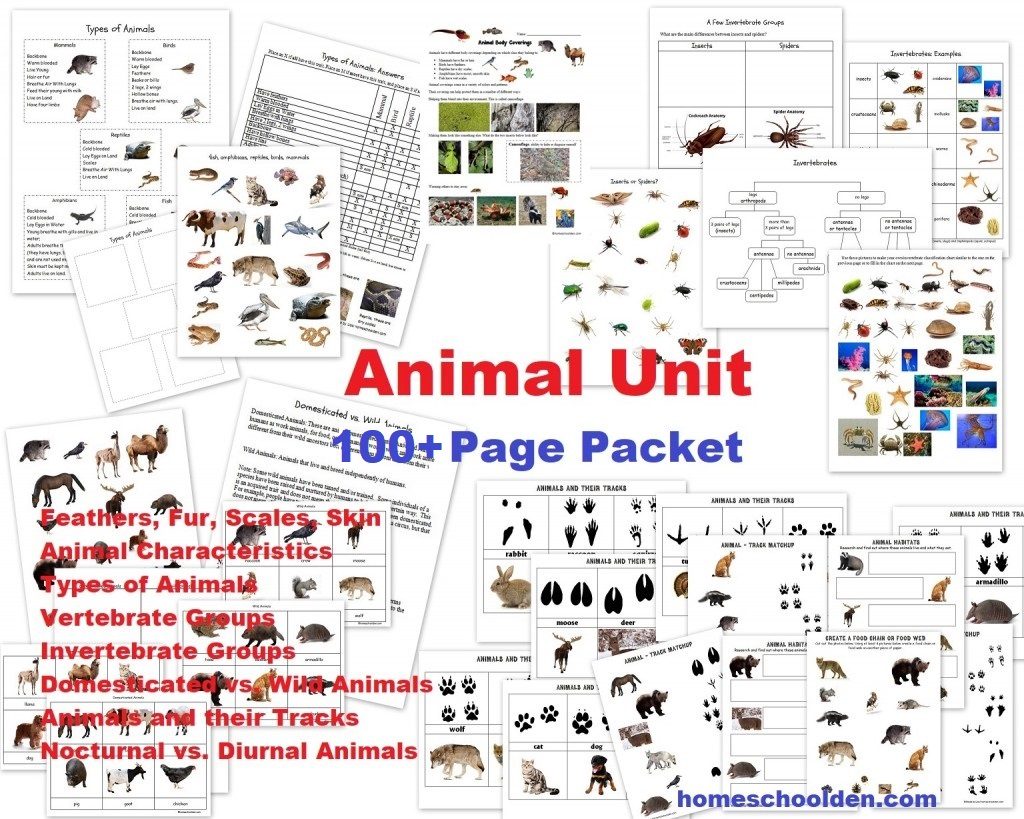
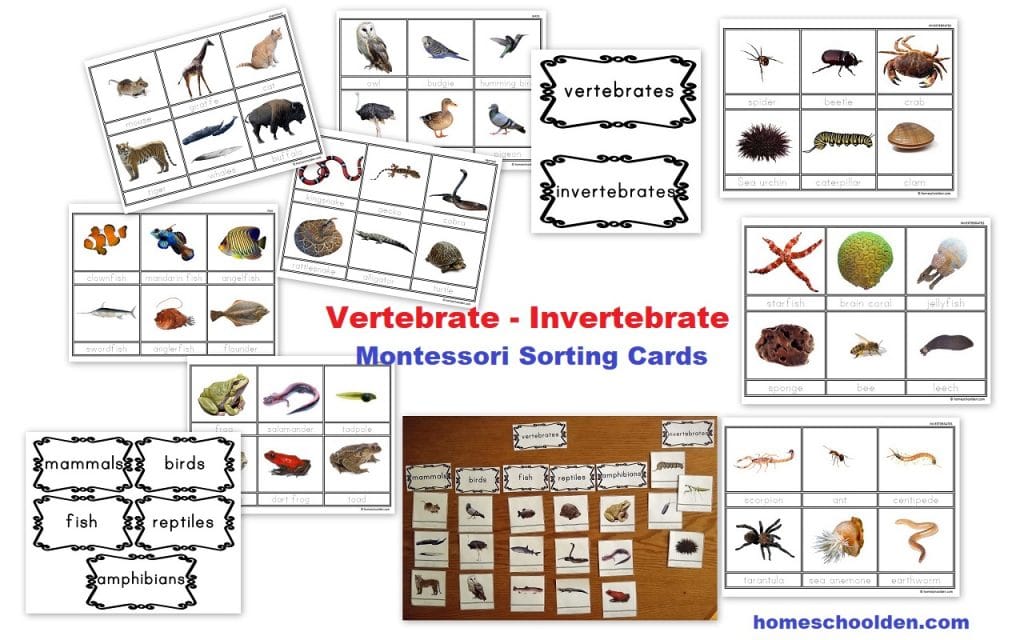
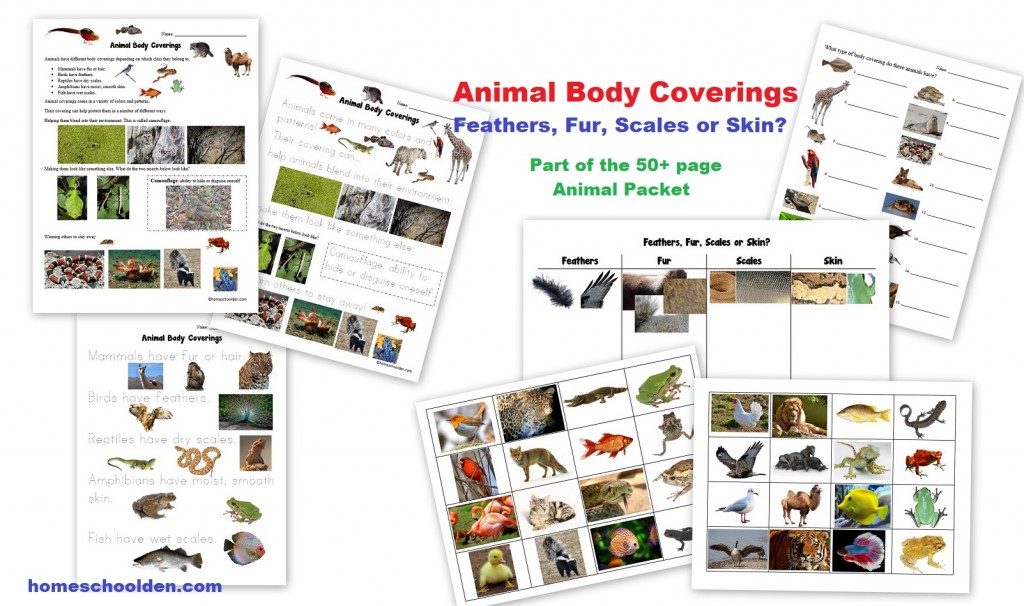
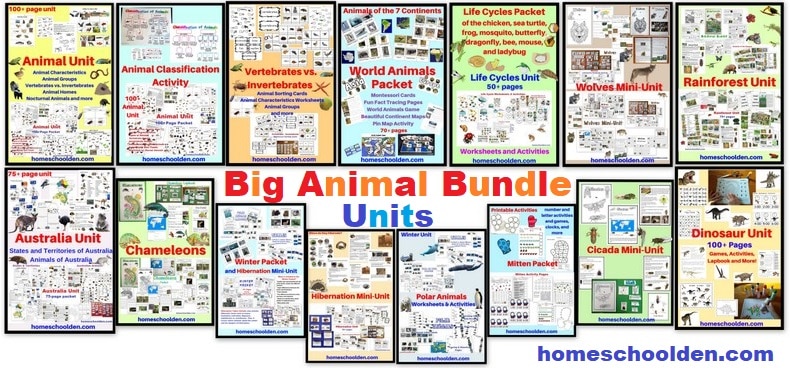

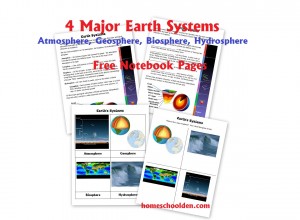
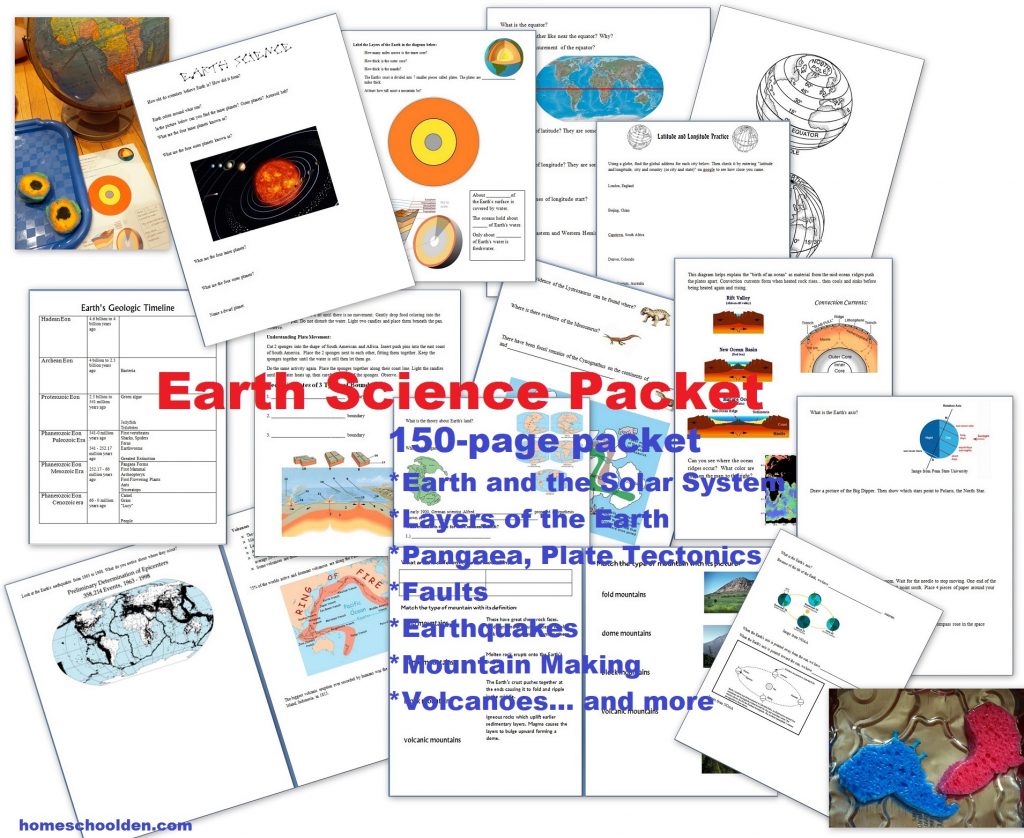
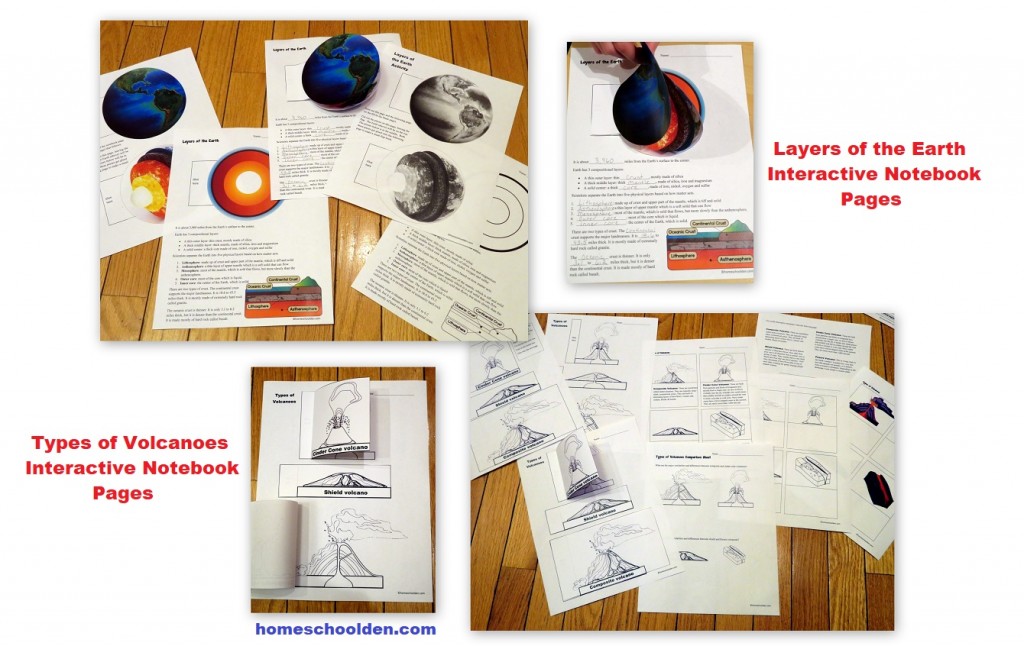

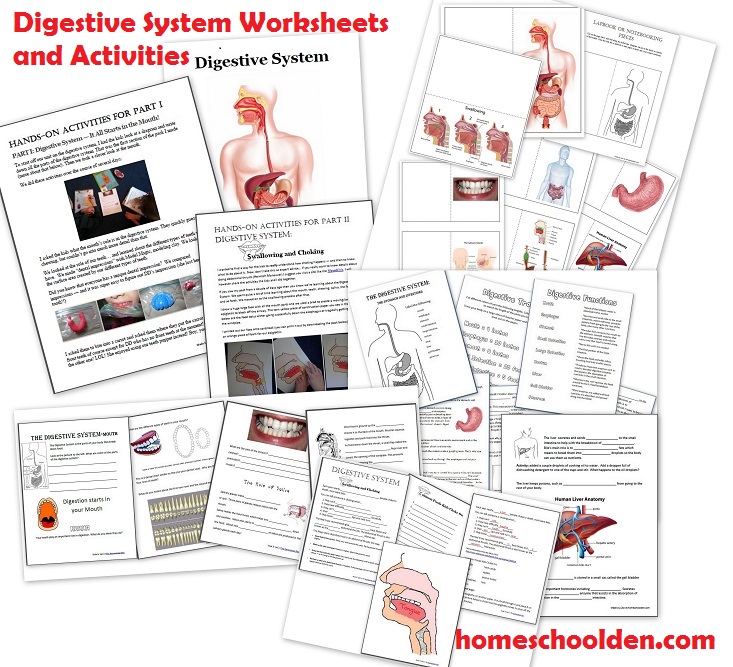
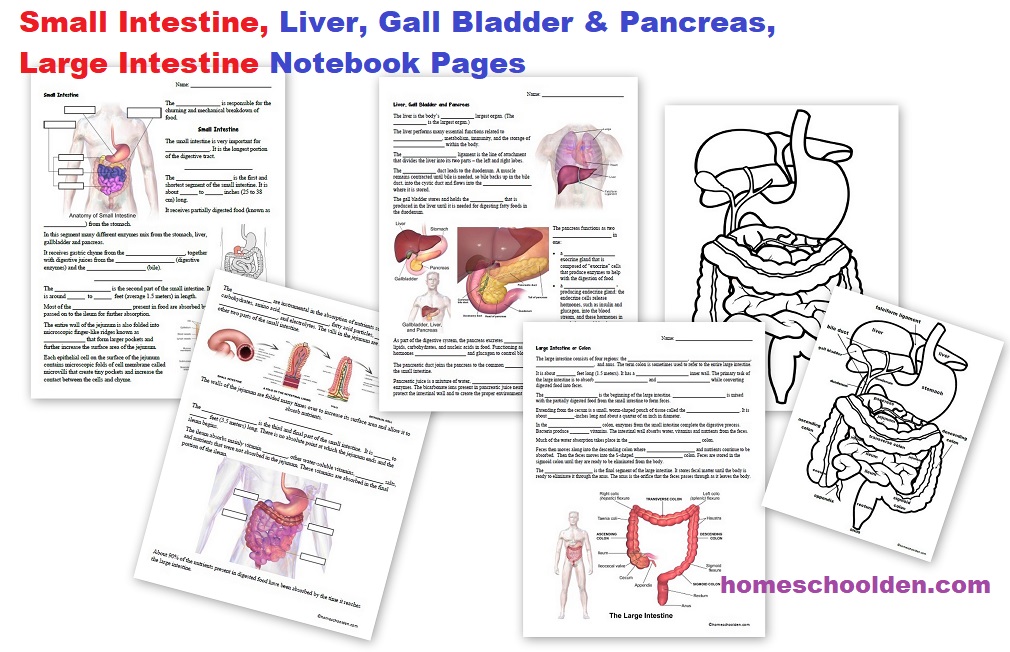
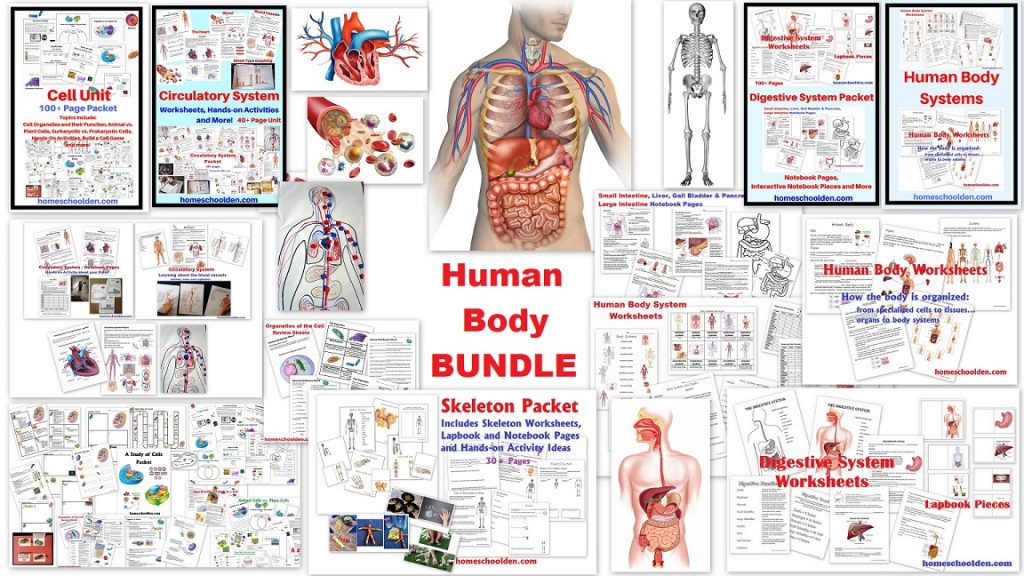
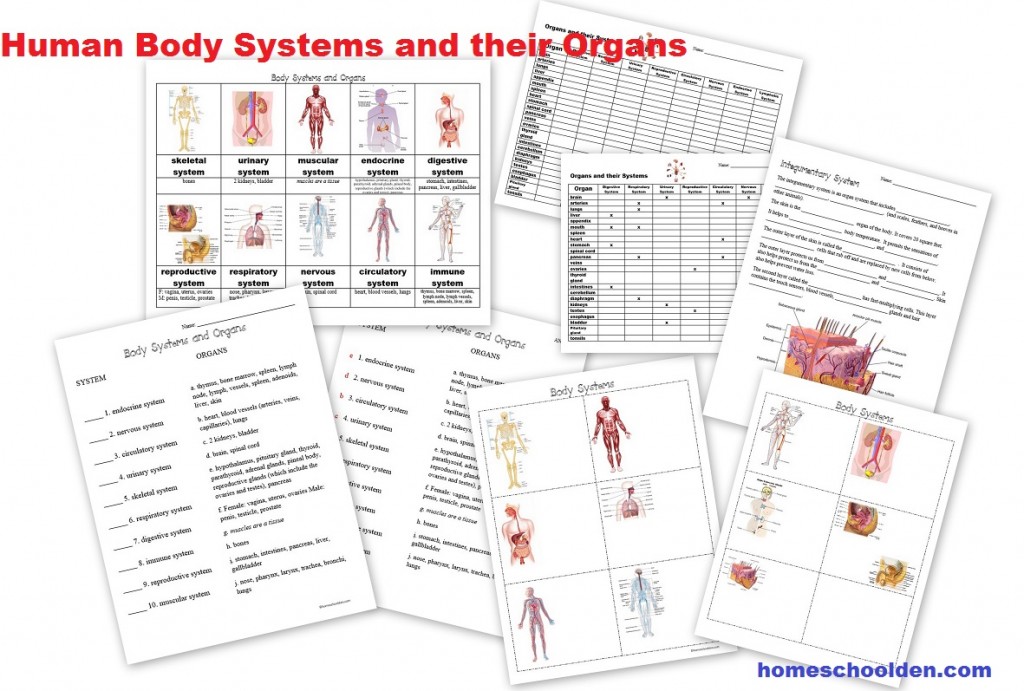
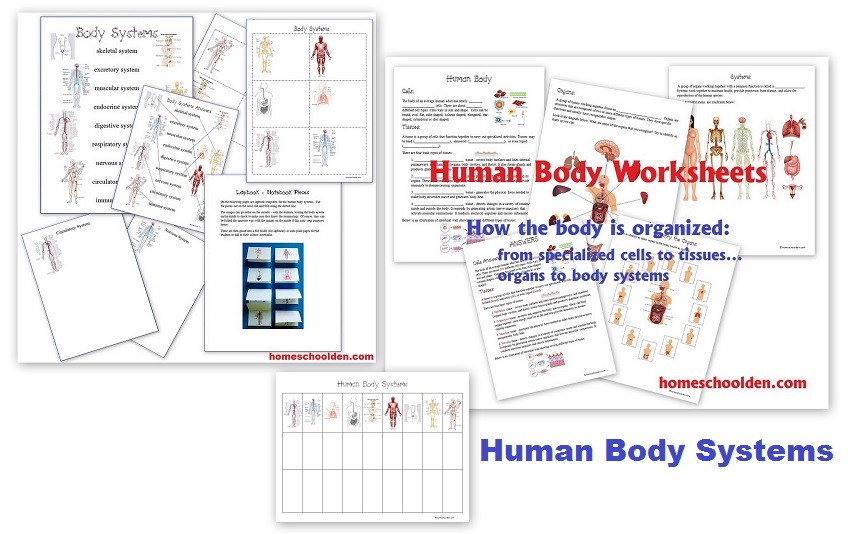
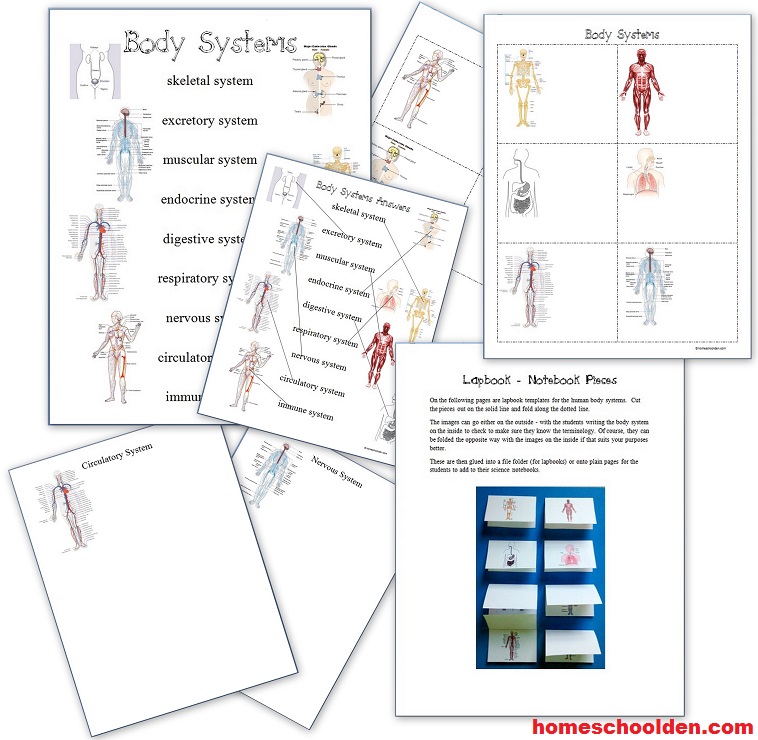
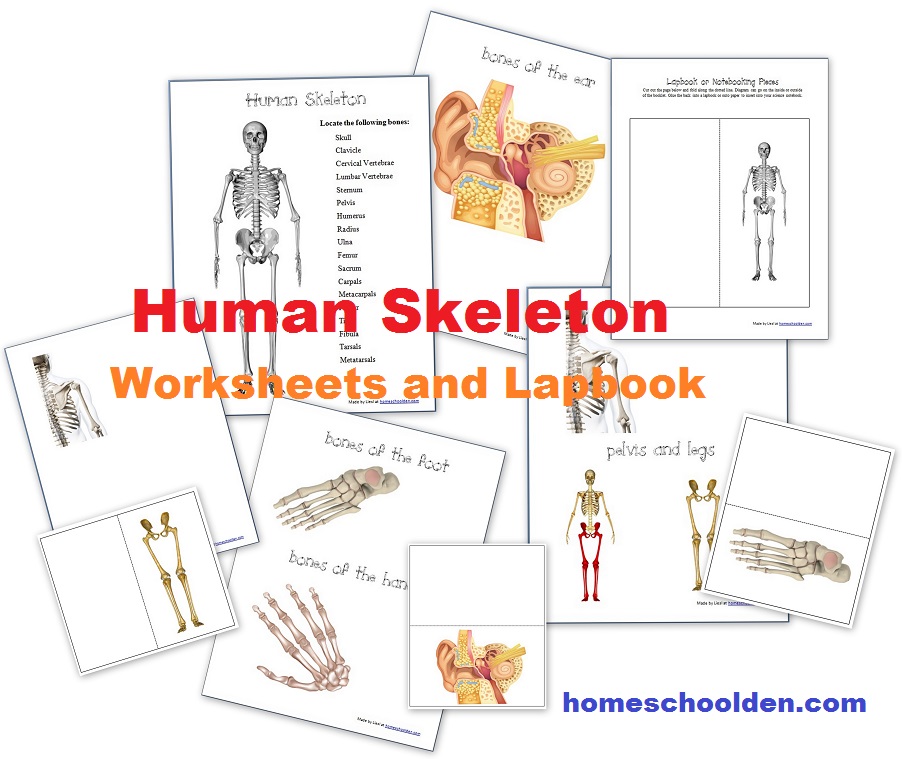
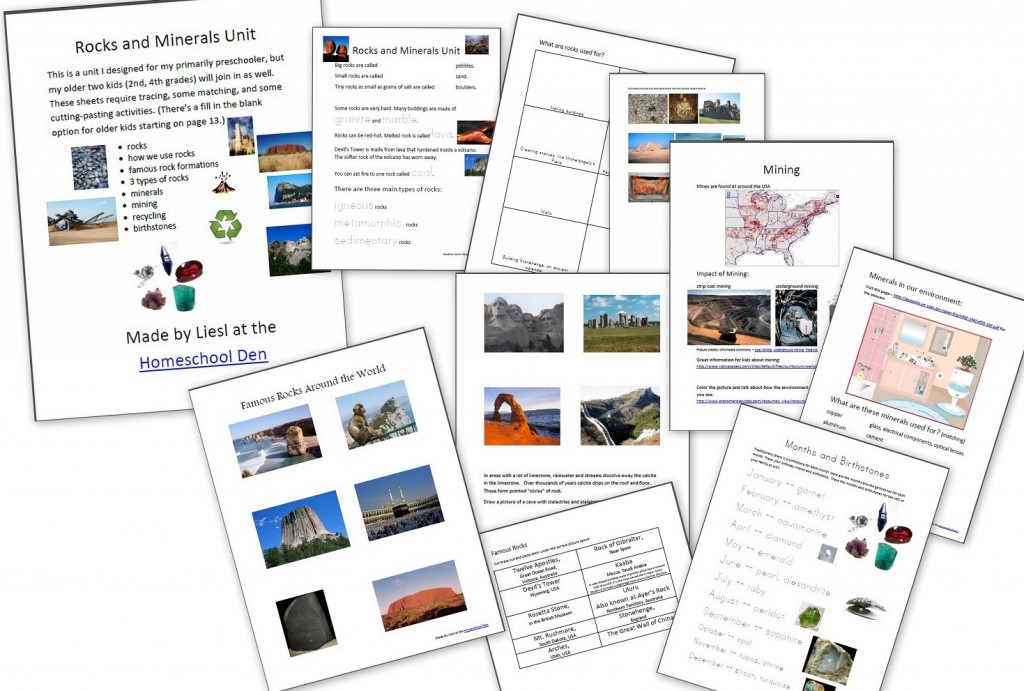
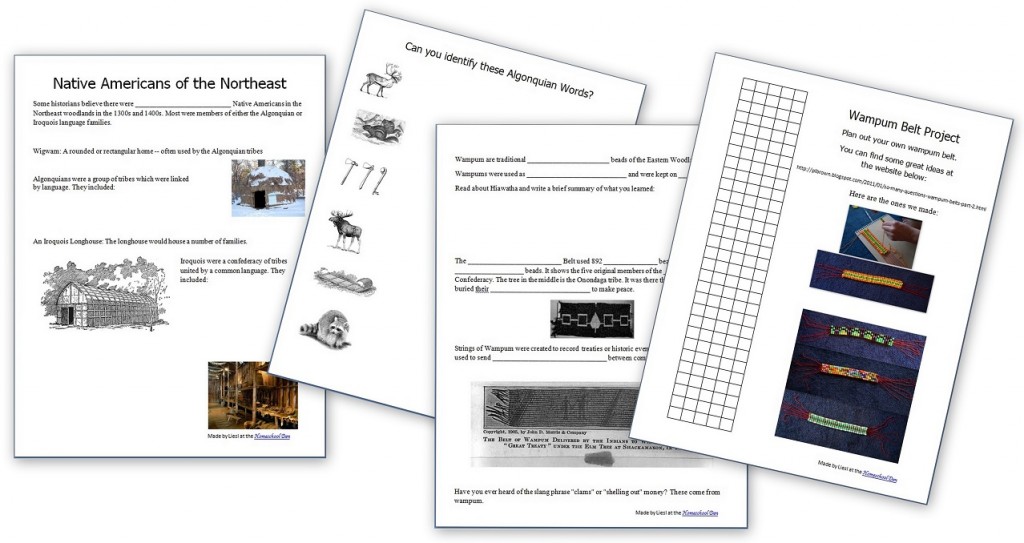
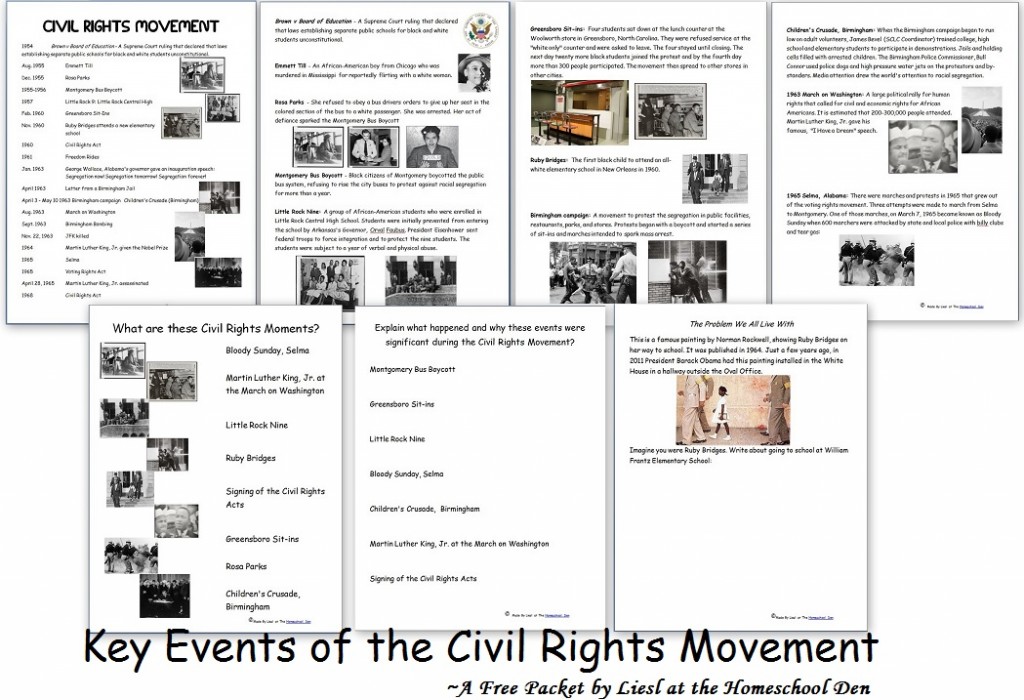
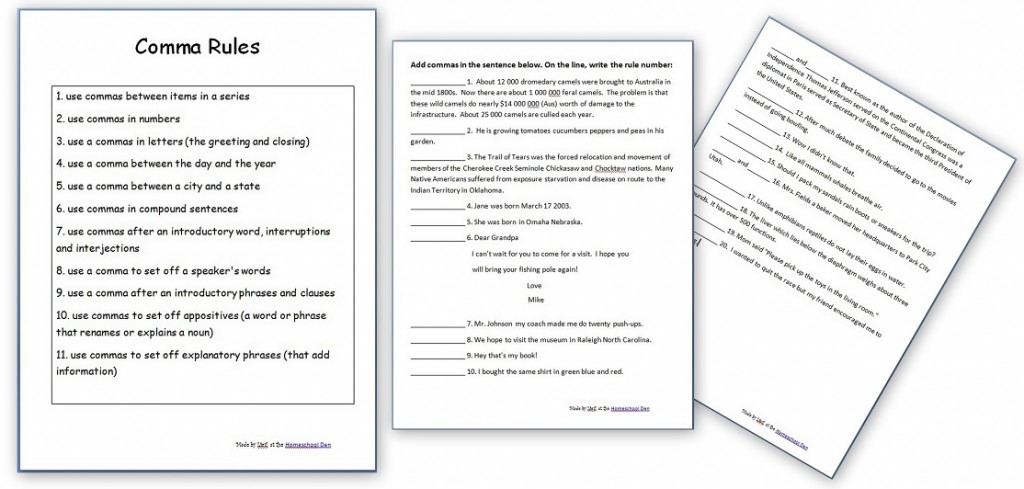
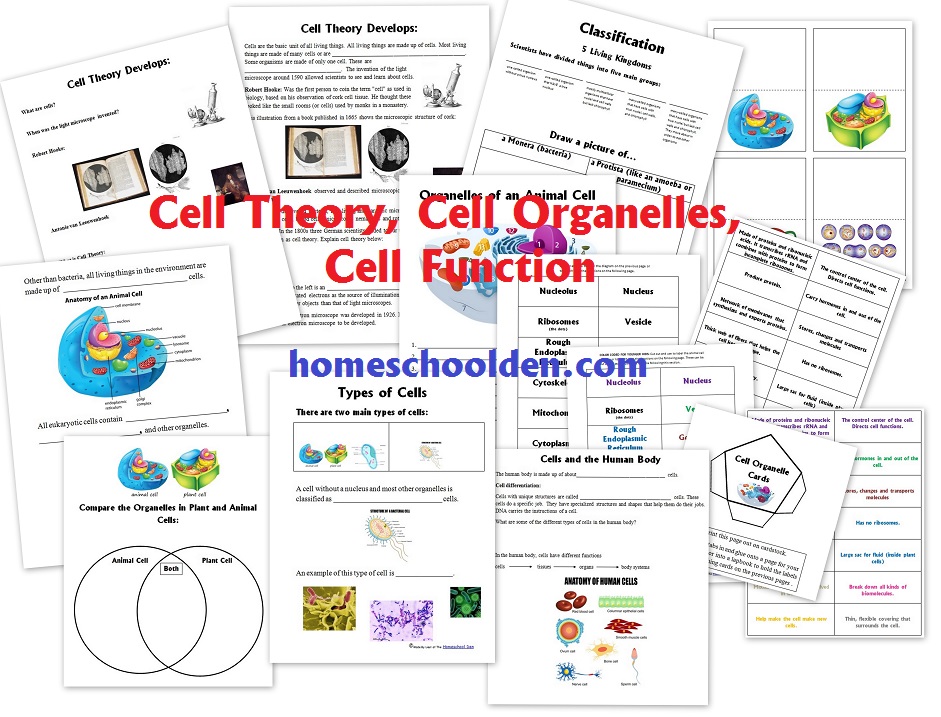
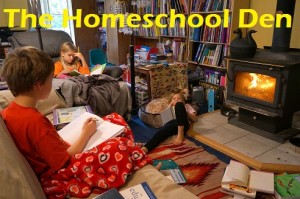
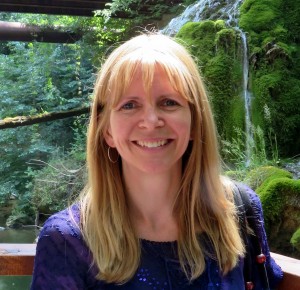
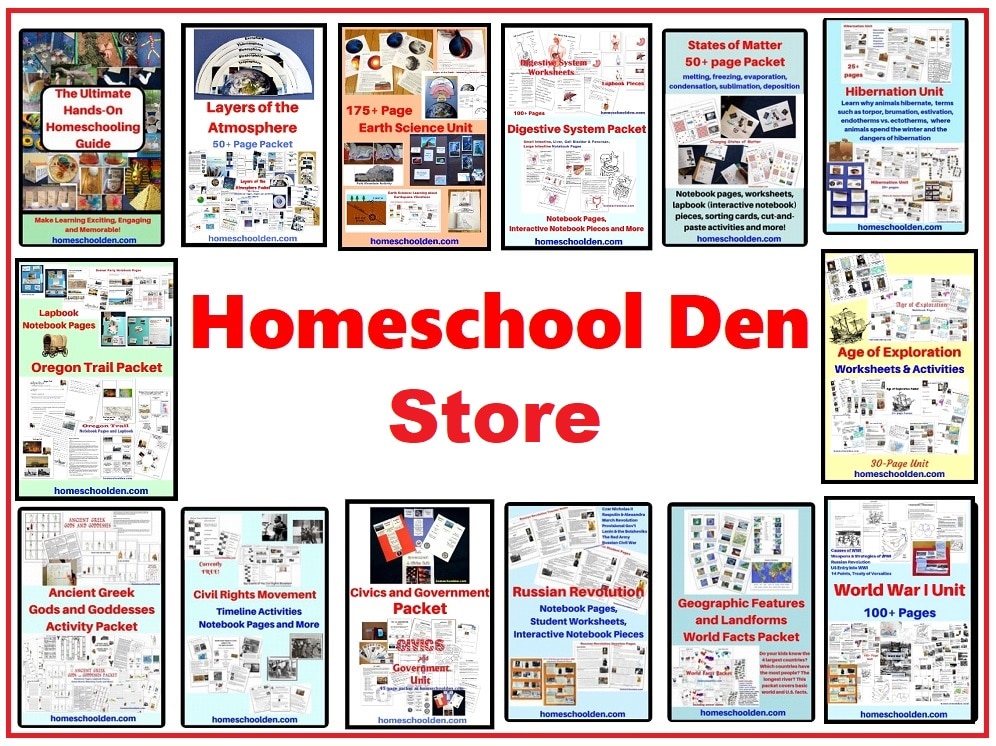
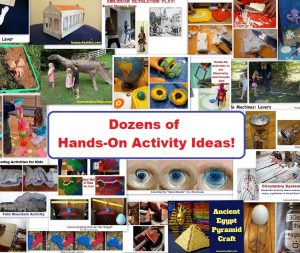


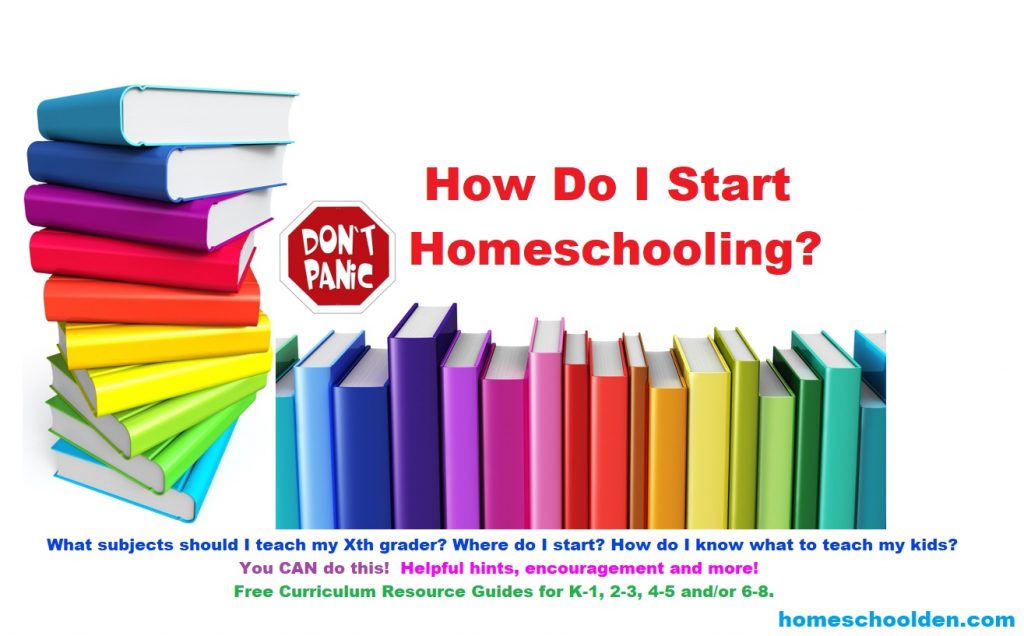
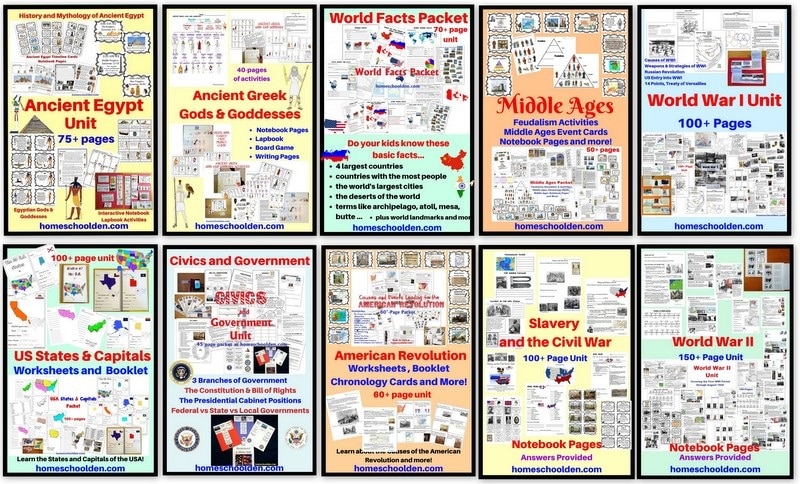
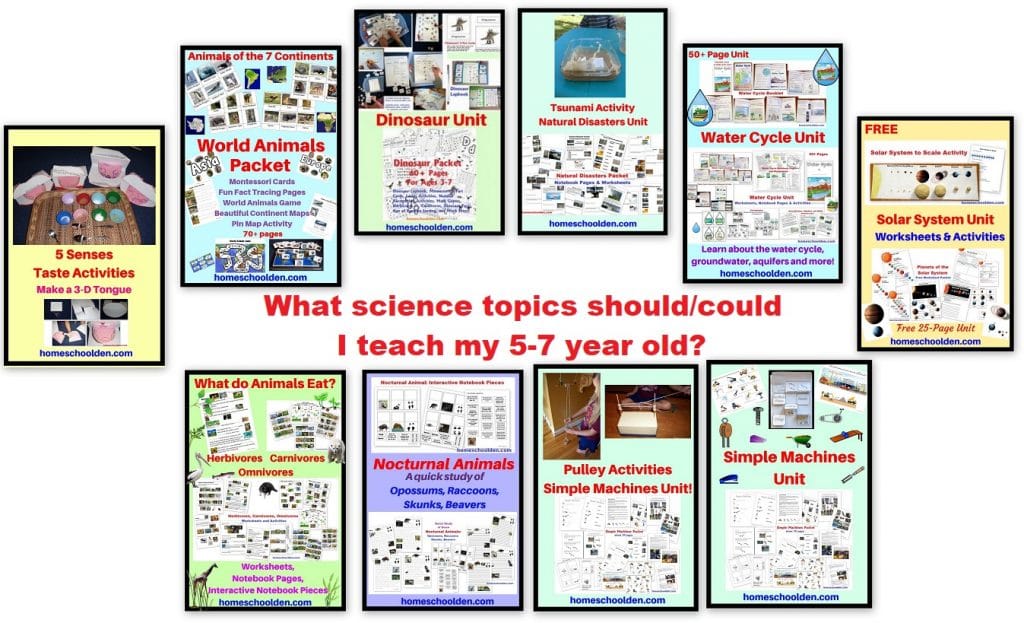

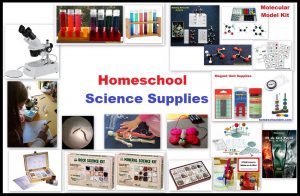
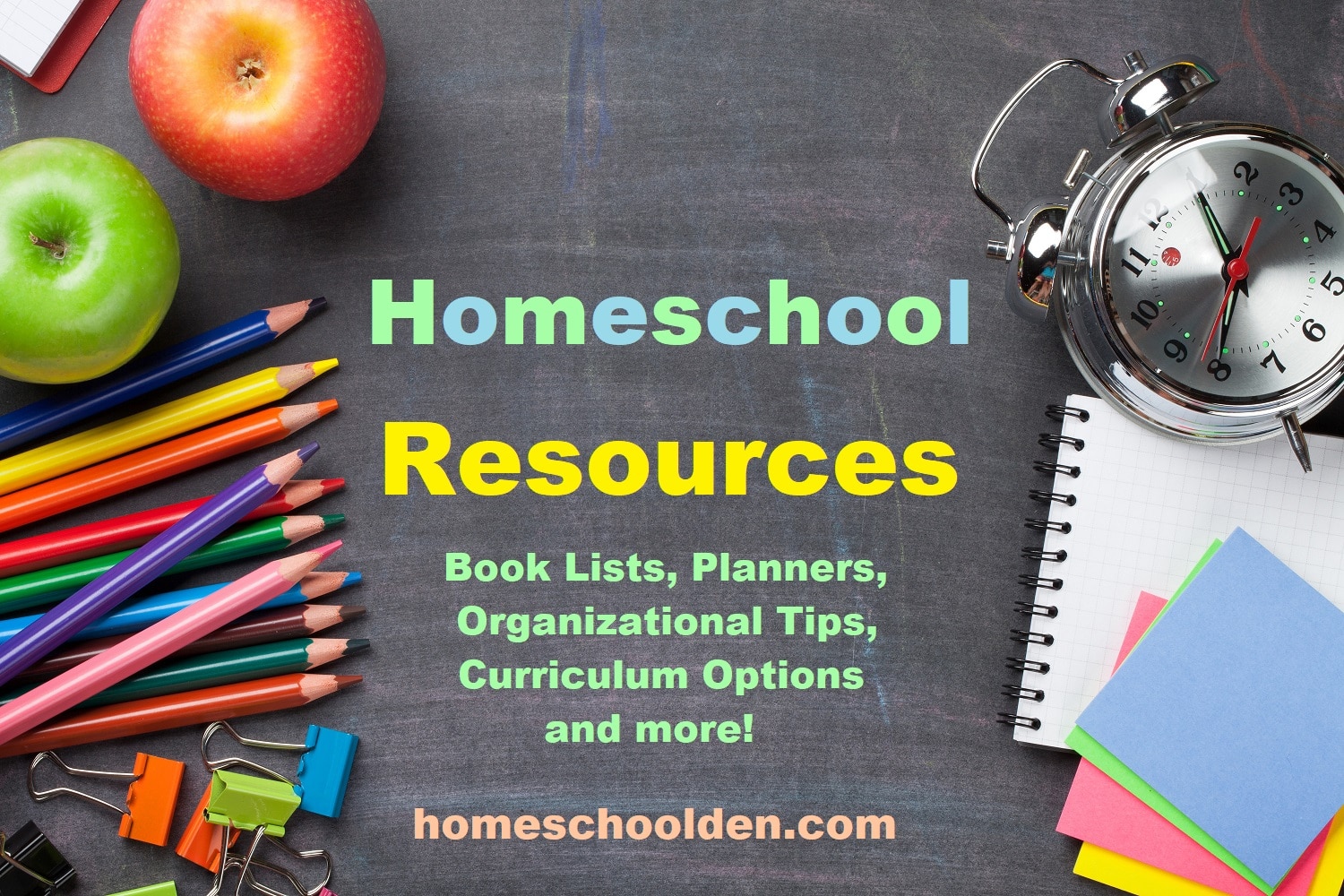

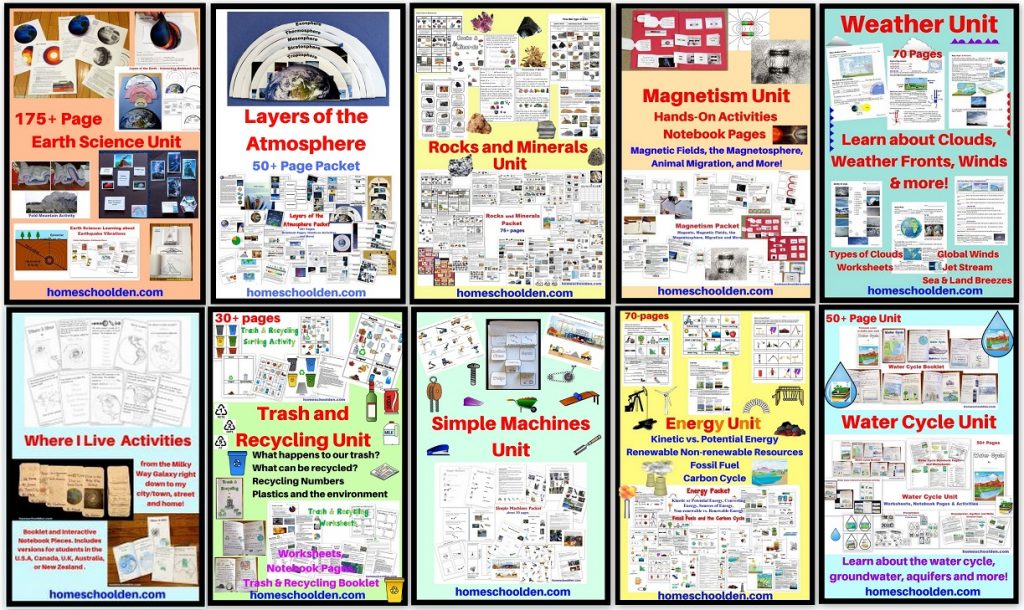
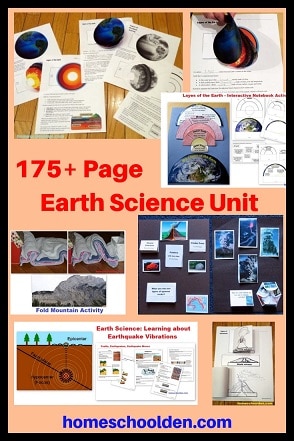
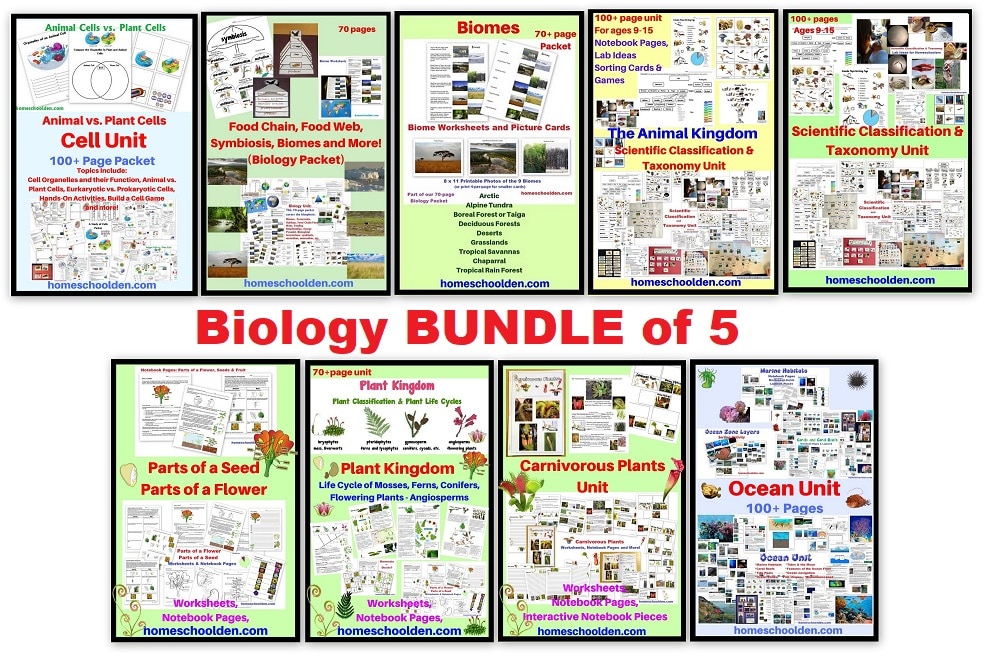
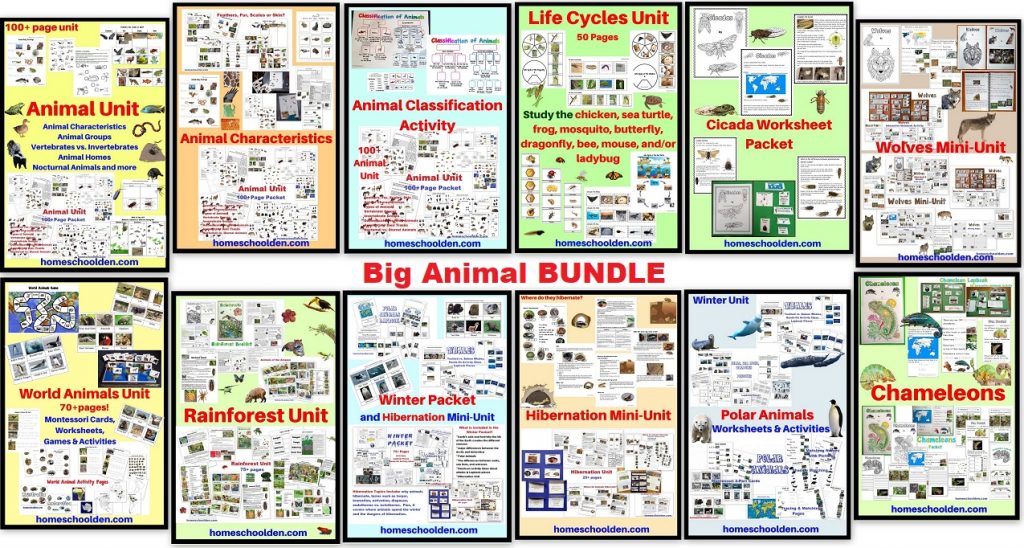
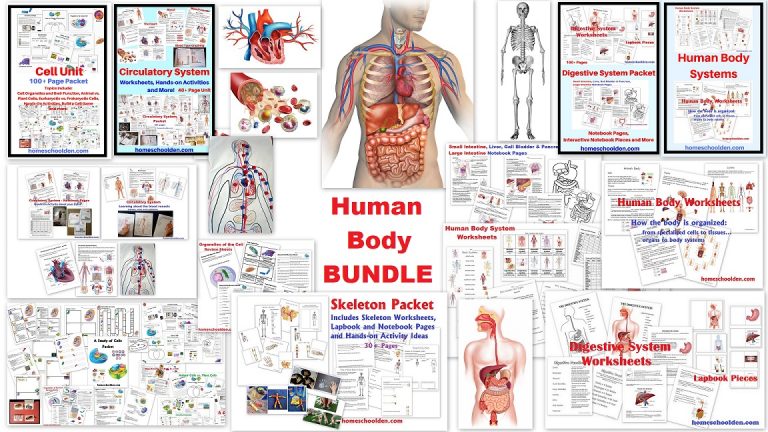
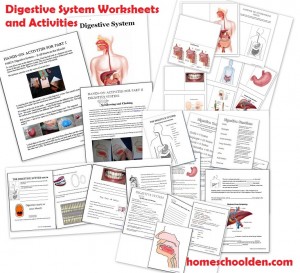


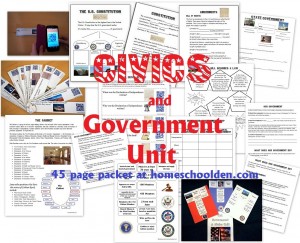
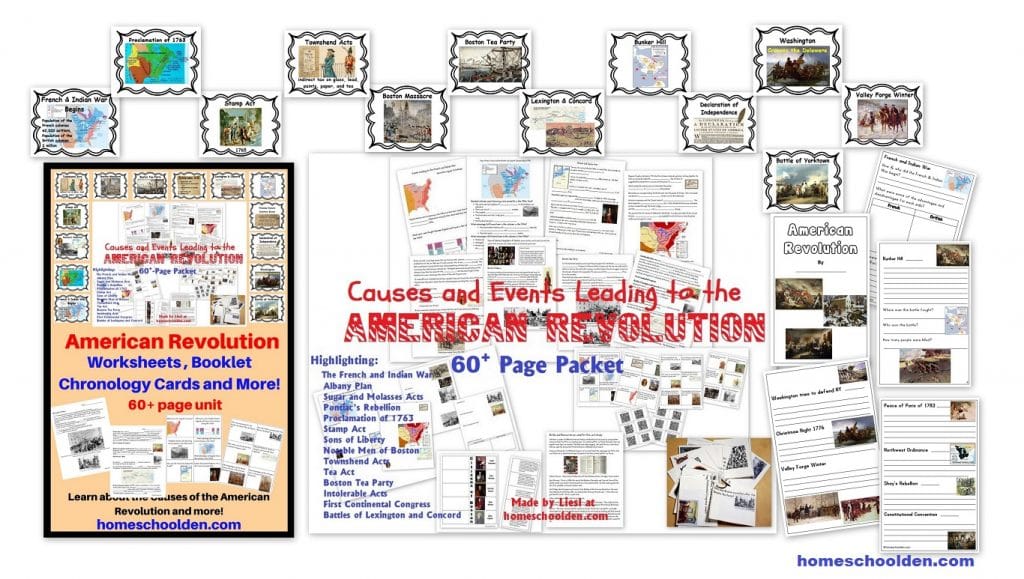
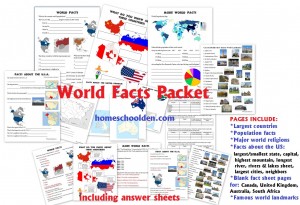
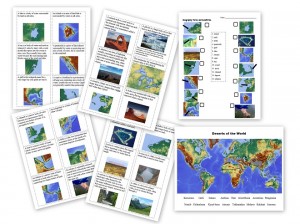
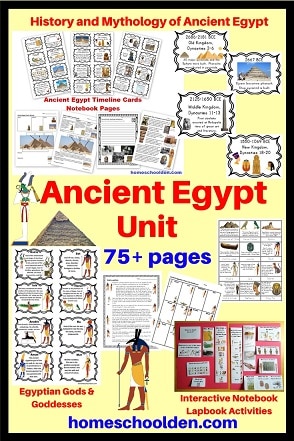
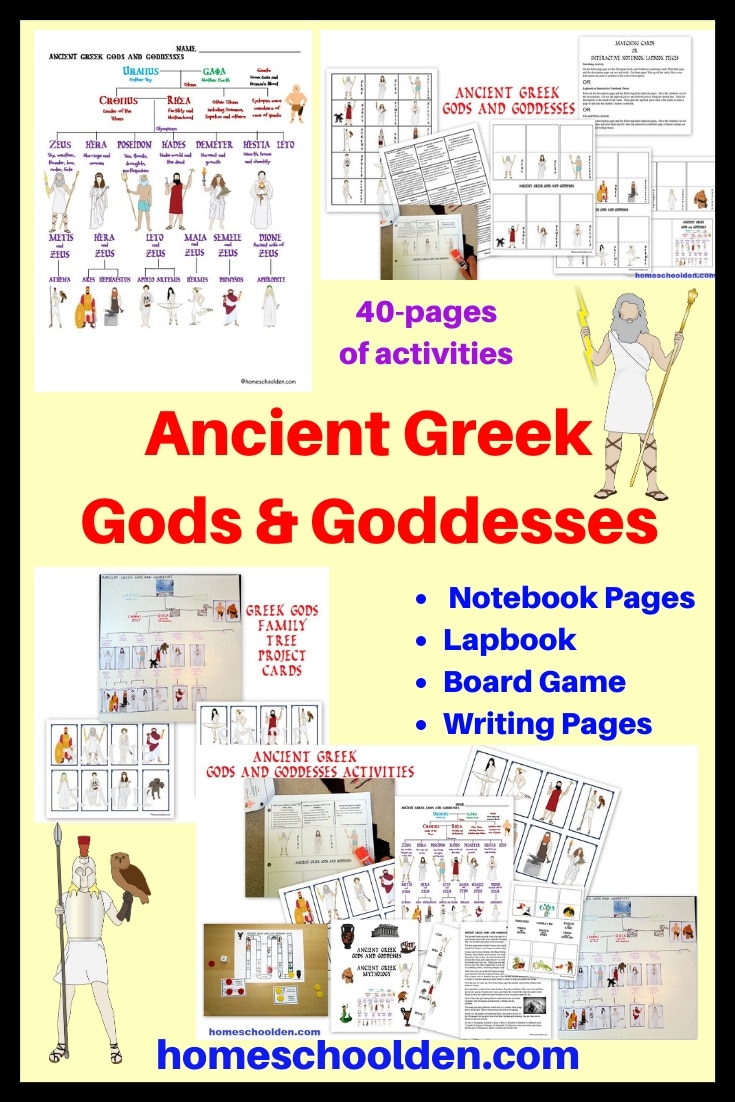


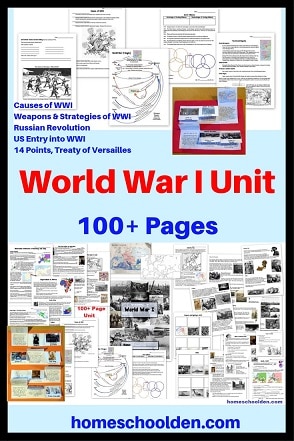
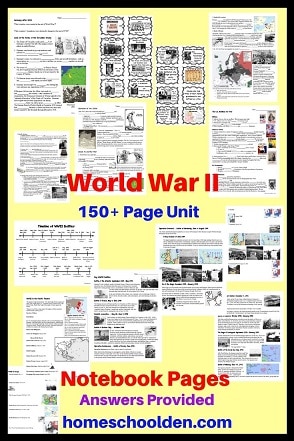
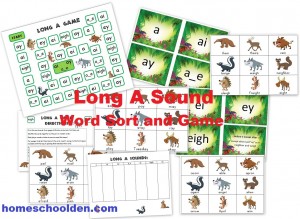
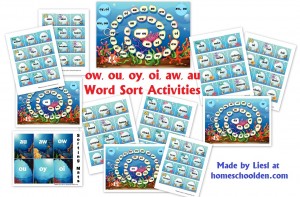
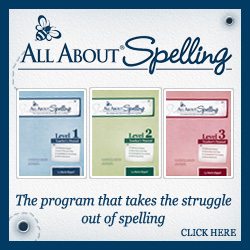
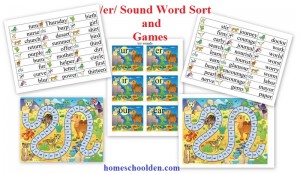
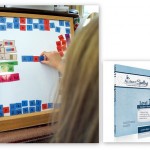
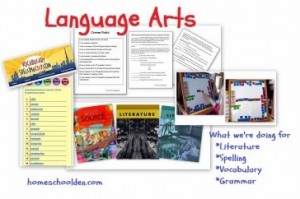
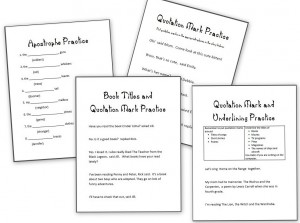

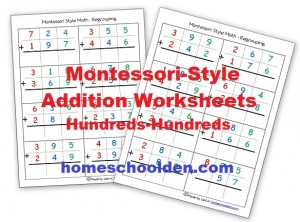
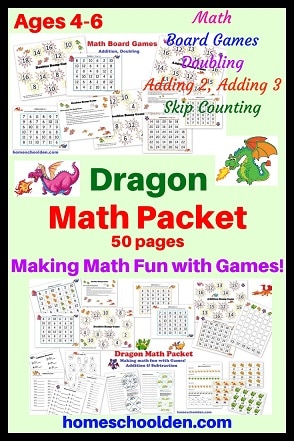
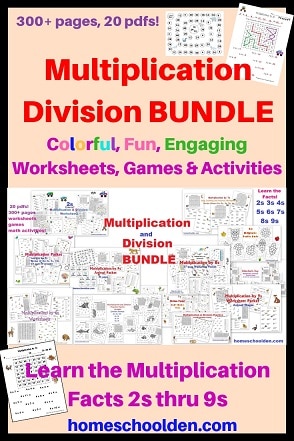
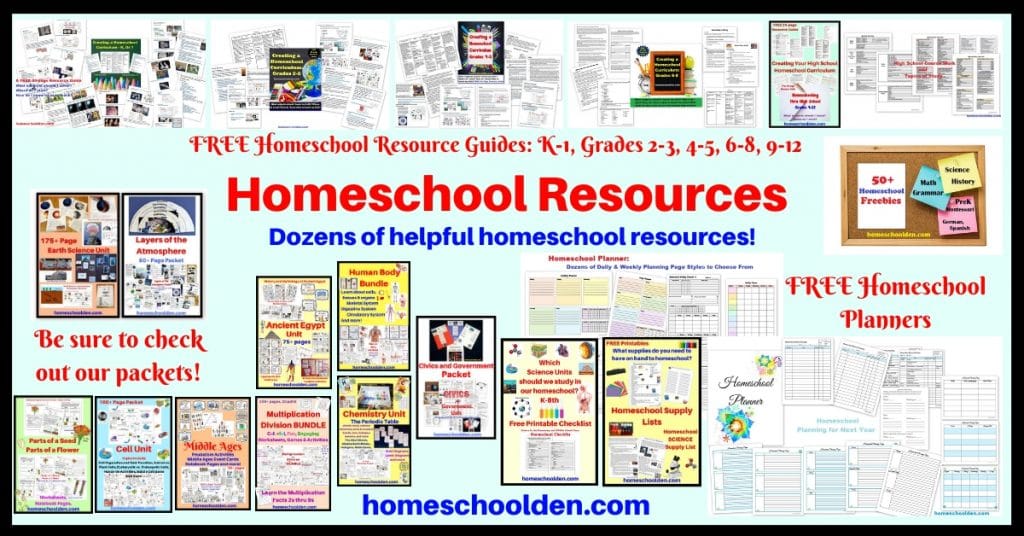
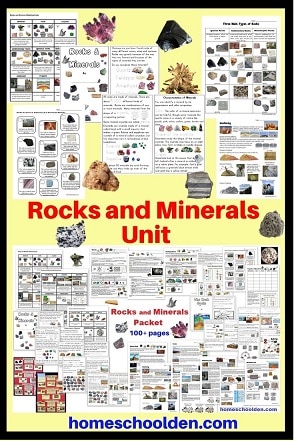
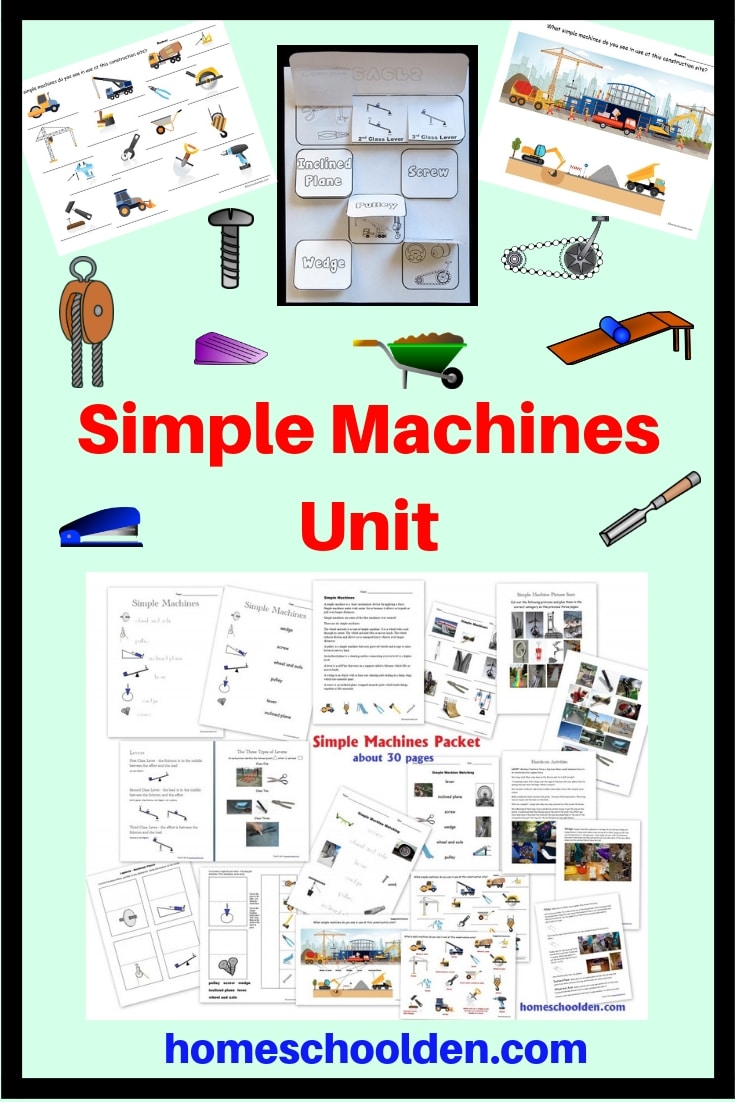
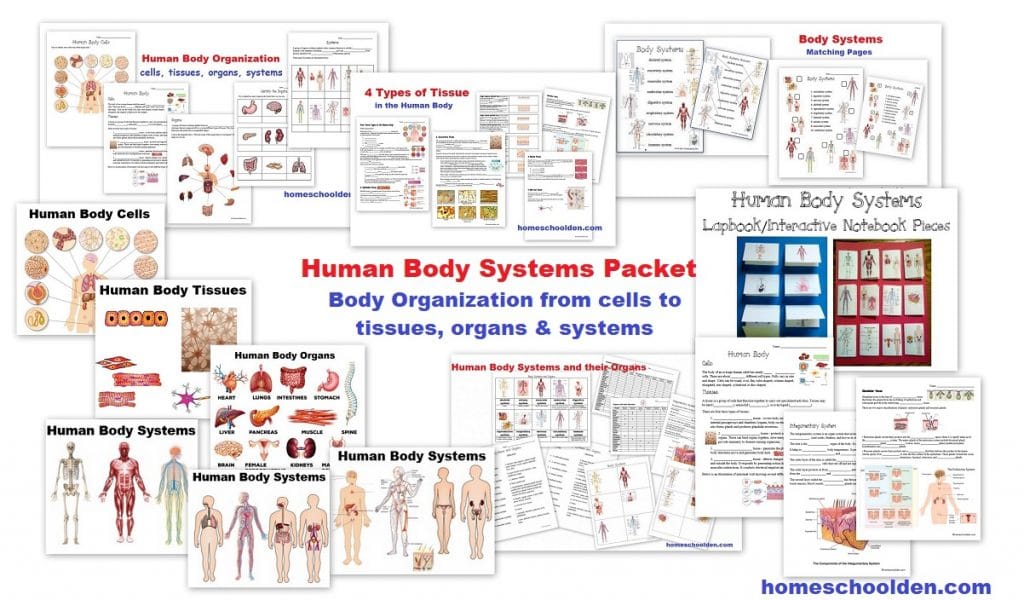
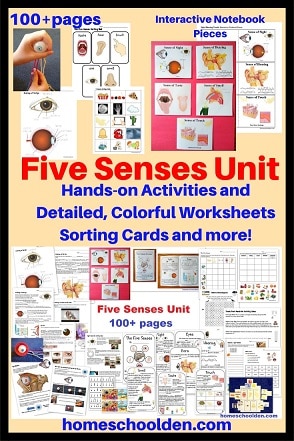
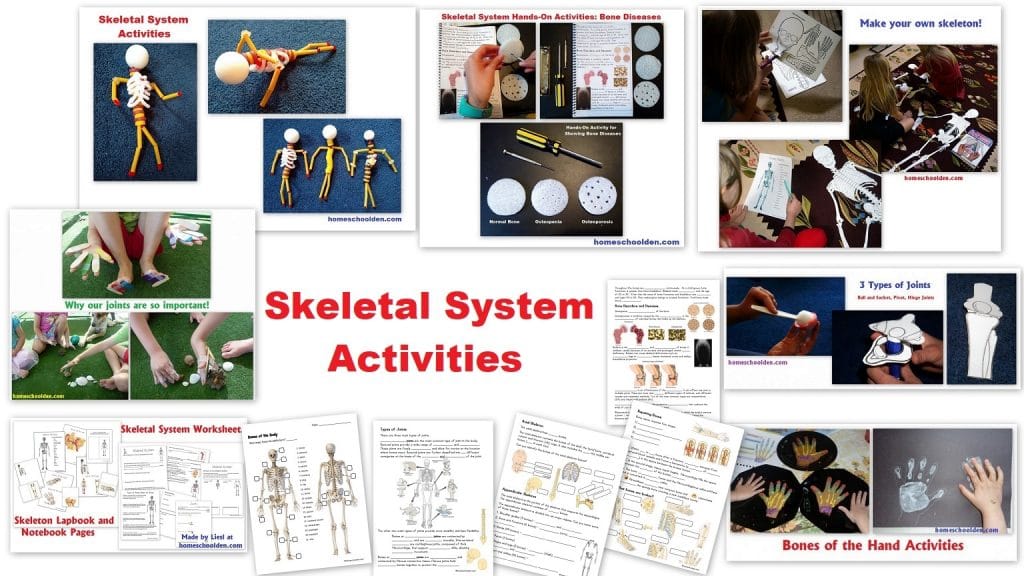
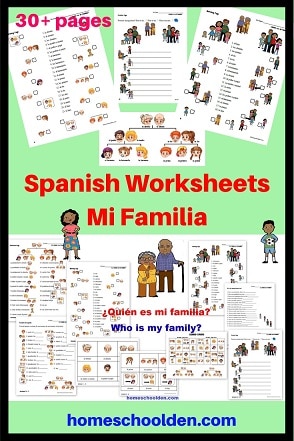
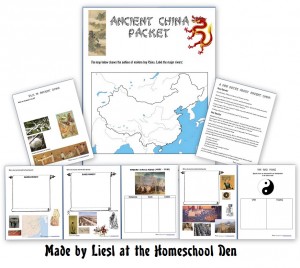
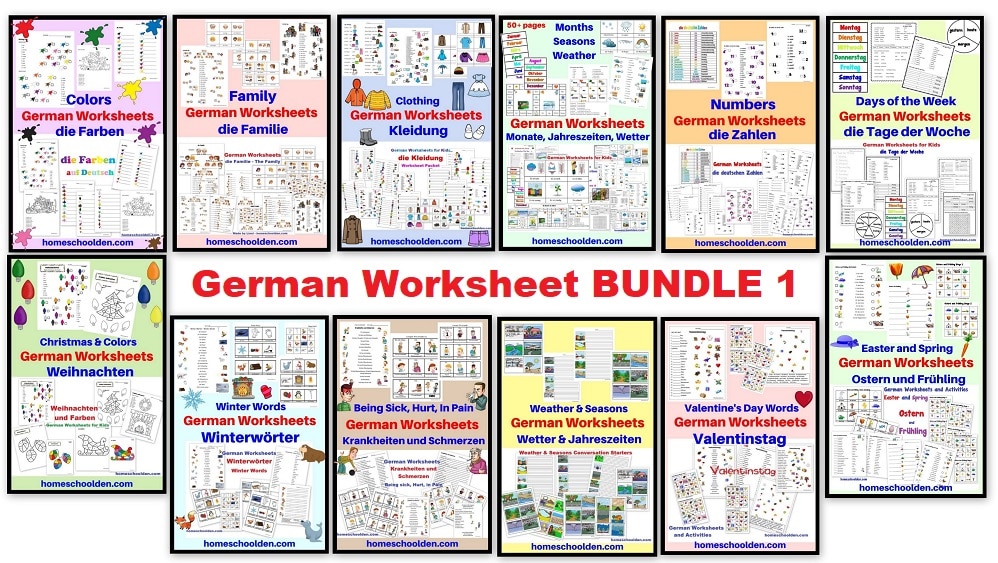
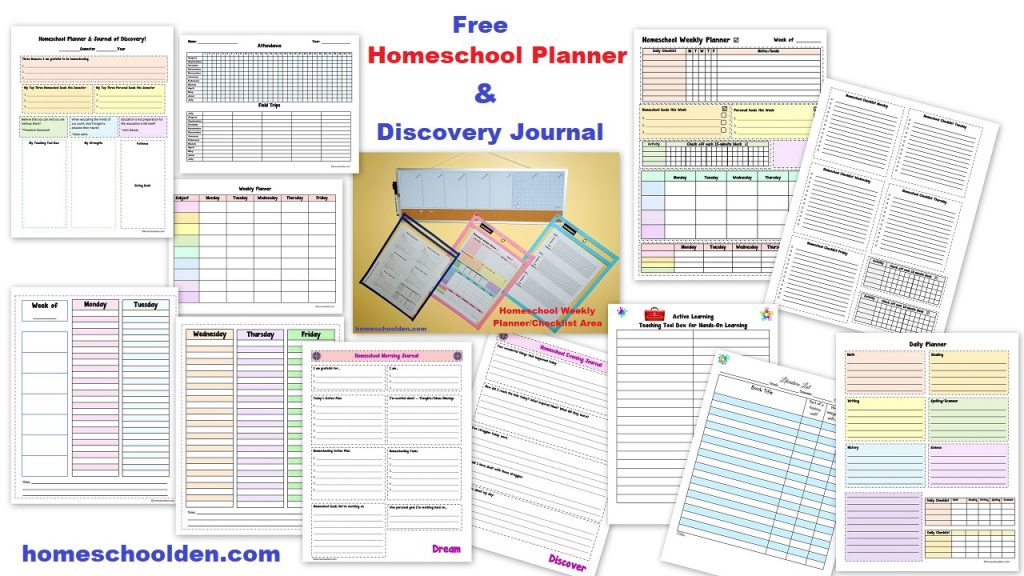
Wow sounds a very thorough unit of work. We did all of this last year, it was so interesting and I think I learned as much as the kids!
It was a fun unit! The kids especially liked the section we did on biological interactions. Many of those terms were new to us, though you know just from experience that some organisms benefit from one another (bee/flower), while some don’t mammals/fleas! Fun unit and I loved picking out all the pictures! 🙂
Thanks for leaving a note. I’ll have to go check out and see what you’re up to these days! ~Liesl
What age would you put this unit at? I have have a 4 and 7 year old. I am new to your site and trying to figure out the levels of the materials.
Hi Tonya, This unit is probably better for older kids (my three were in later elementary and middle school when we did this unit). For your kids, I’d recommend the Animal Unit and some of the units in the Big Animal Bundle: homeschoolden.com/big-animal-bundle/ Let me know if you have any questions! ~Liesl